CHILDREN'S BLOOD PRESSURE MONITOR
The goal of this semester-long studio project was to improve the design of existing blood pressure monitors while serving a chosen demographic in the unique needs and challenges to which they are subjected.
TARGET MARKET
Research on existing products showed that there were few options designed for children on the market currently. Furthermore, most children under the age of six who have high blood pressure have it as a result of a more serious condition. This poses the potential that these children would need to monitor their blood pressure more frequently, and that they would be exposed to harsh medical environments more often. The goal of this design is to make these children more comfortable during the process of monitoring their blood pressure.
EXISTING PRODUCT ANALYSIS
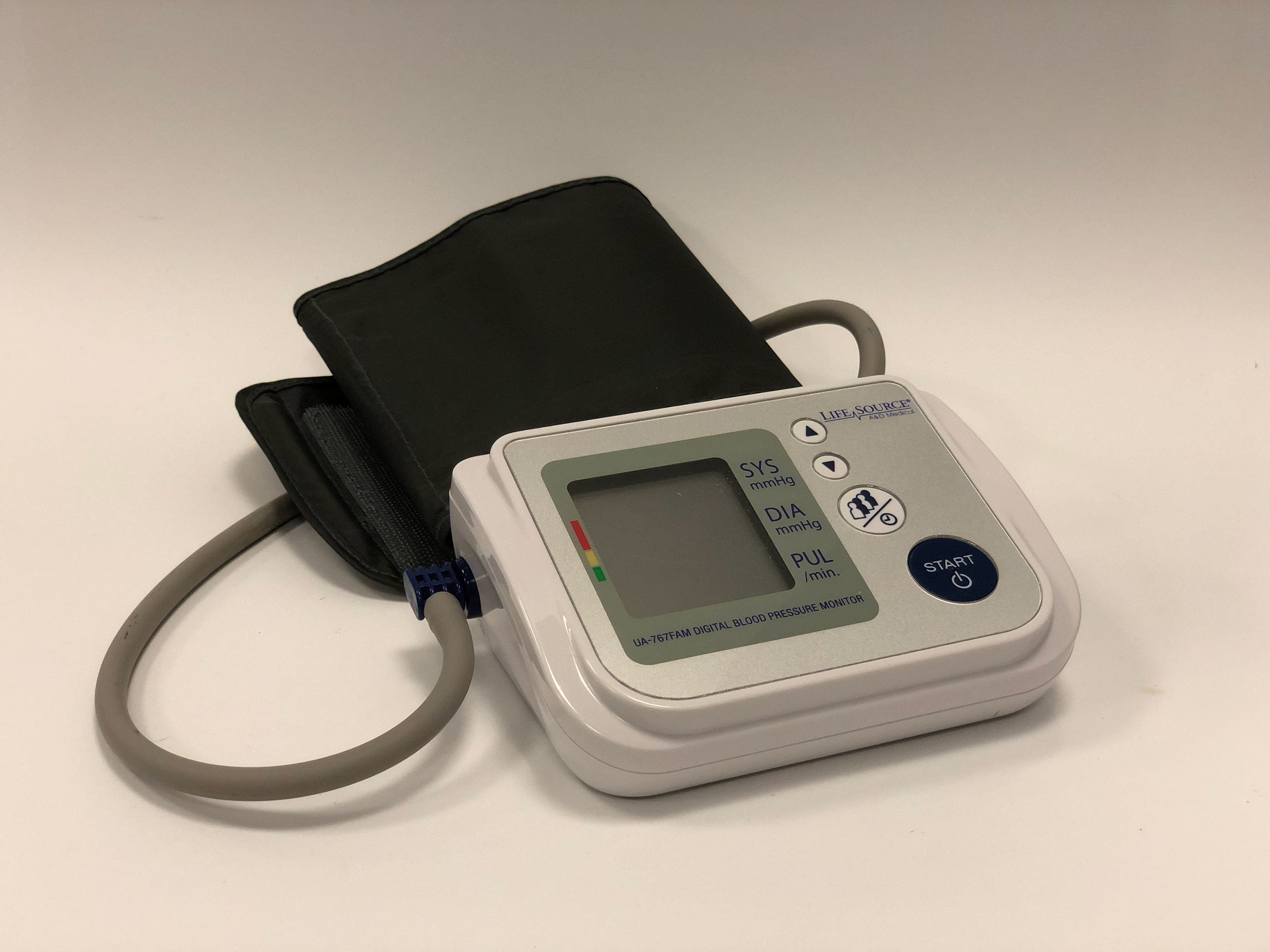
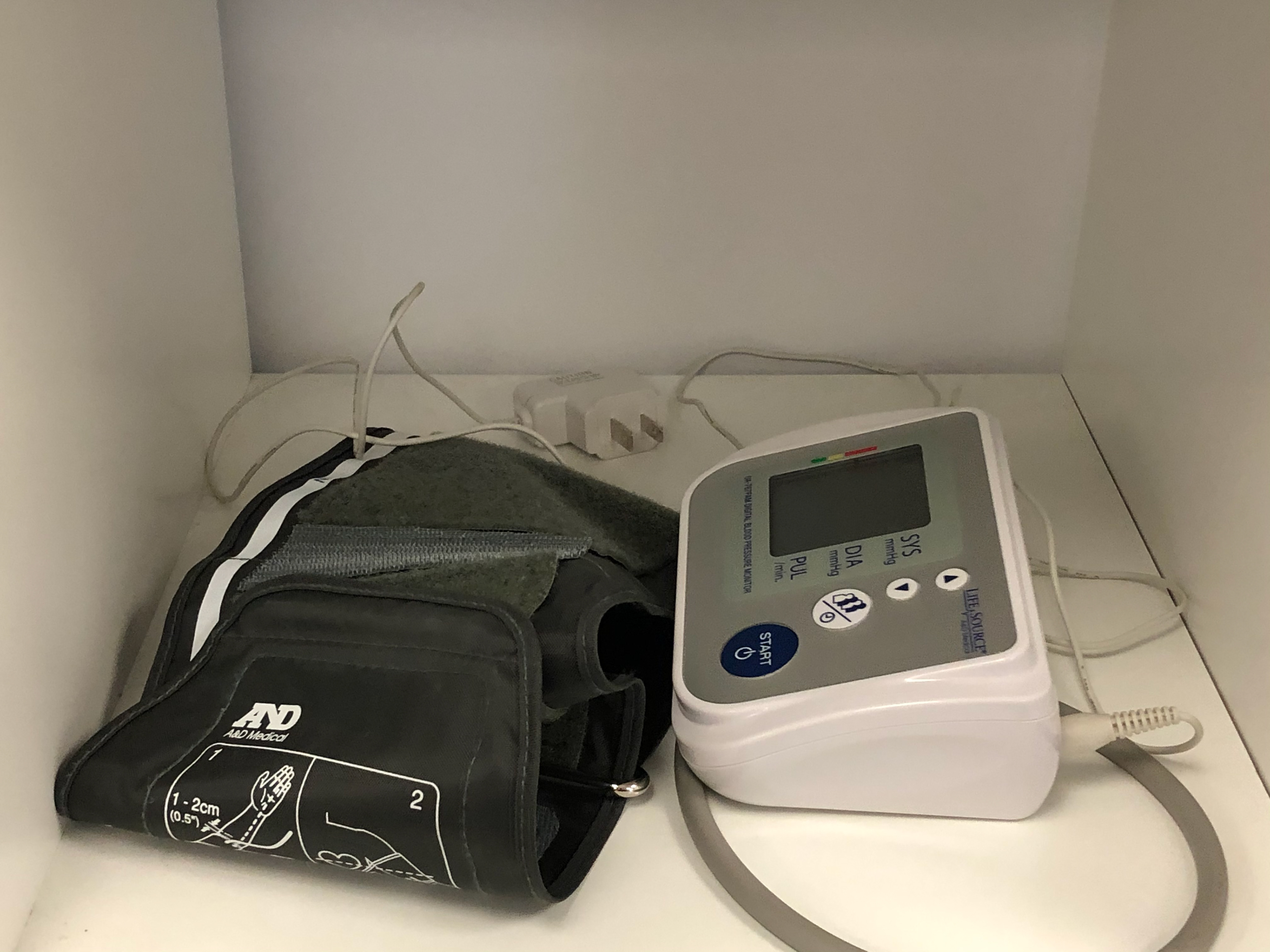
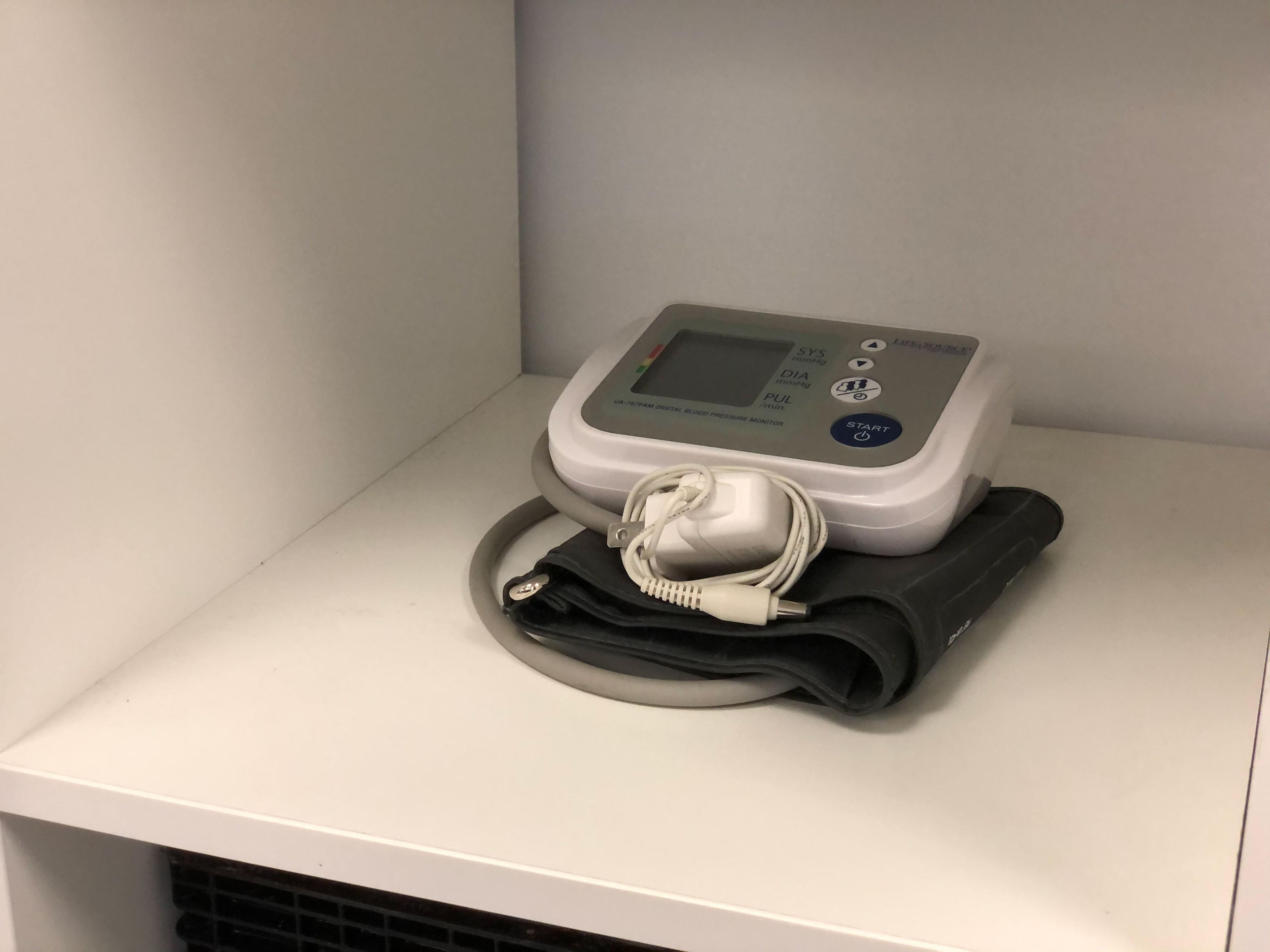
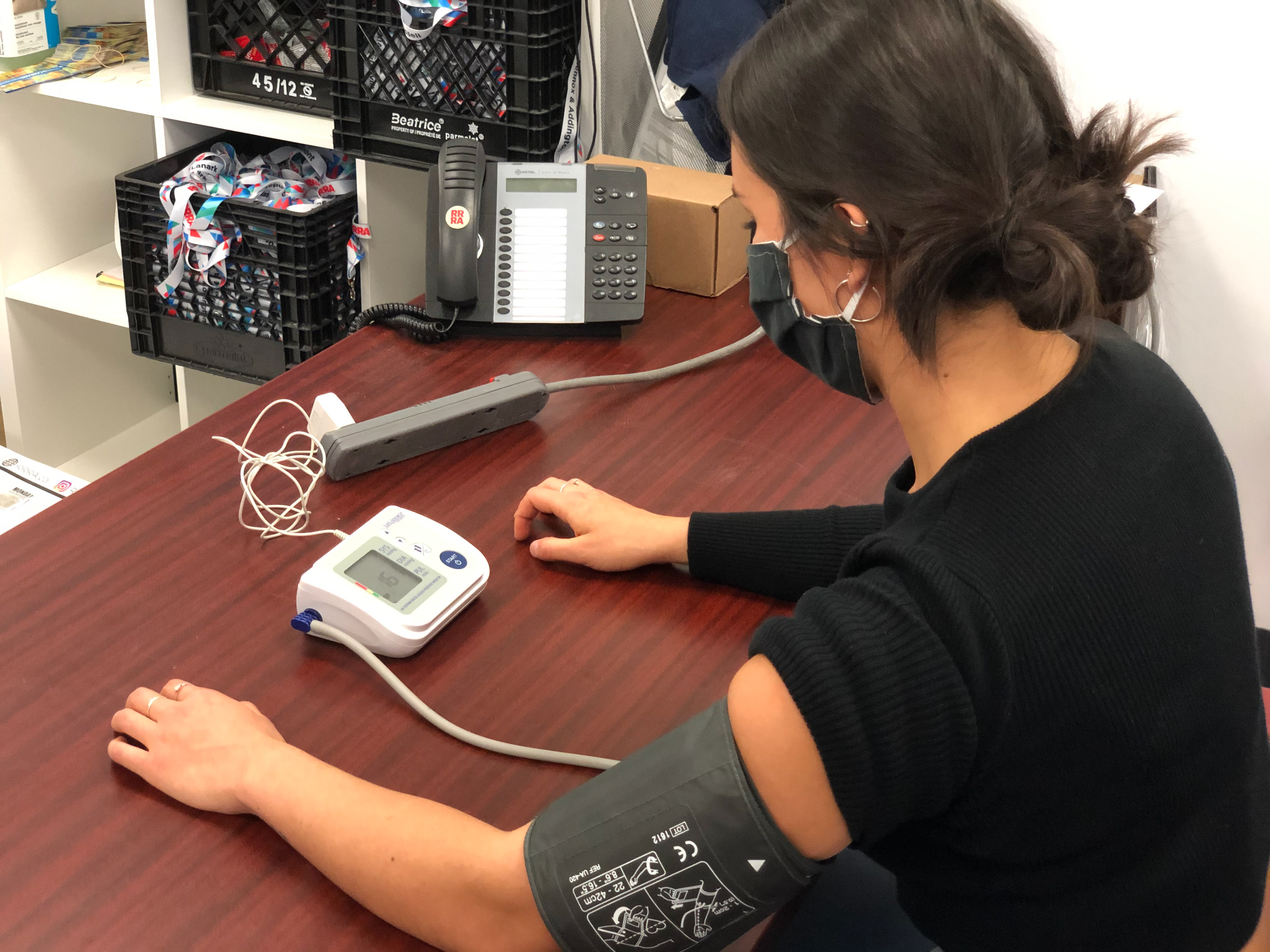
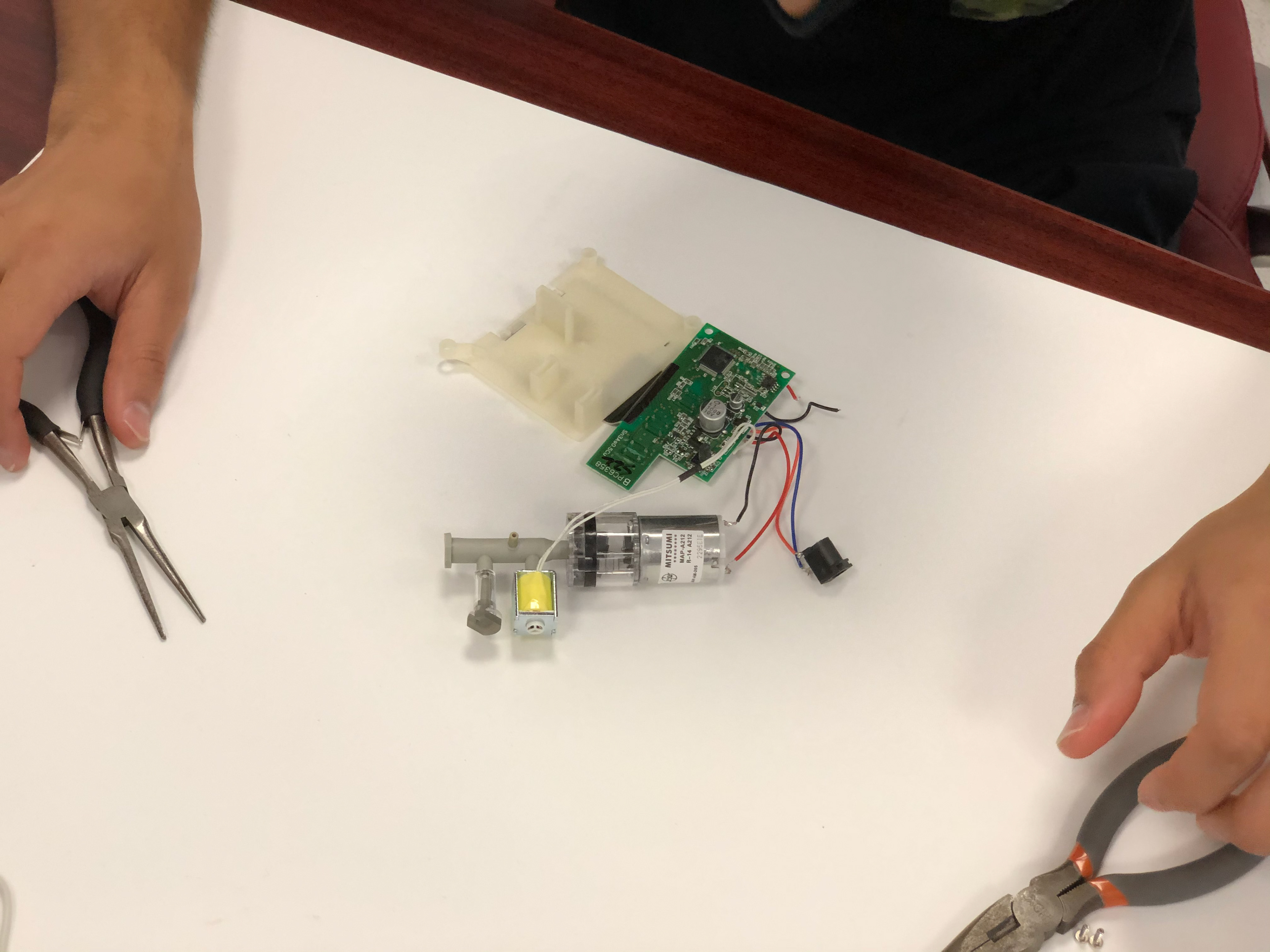
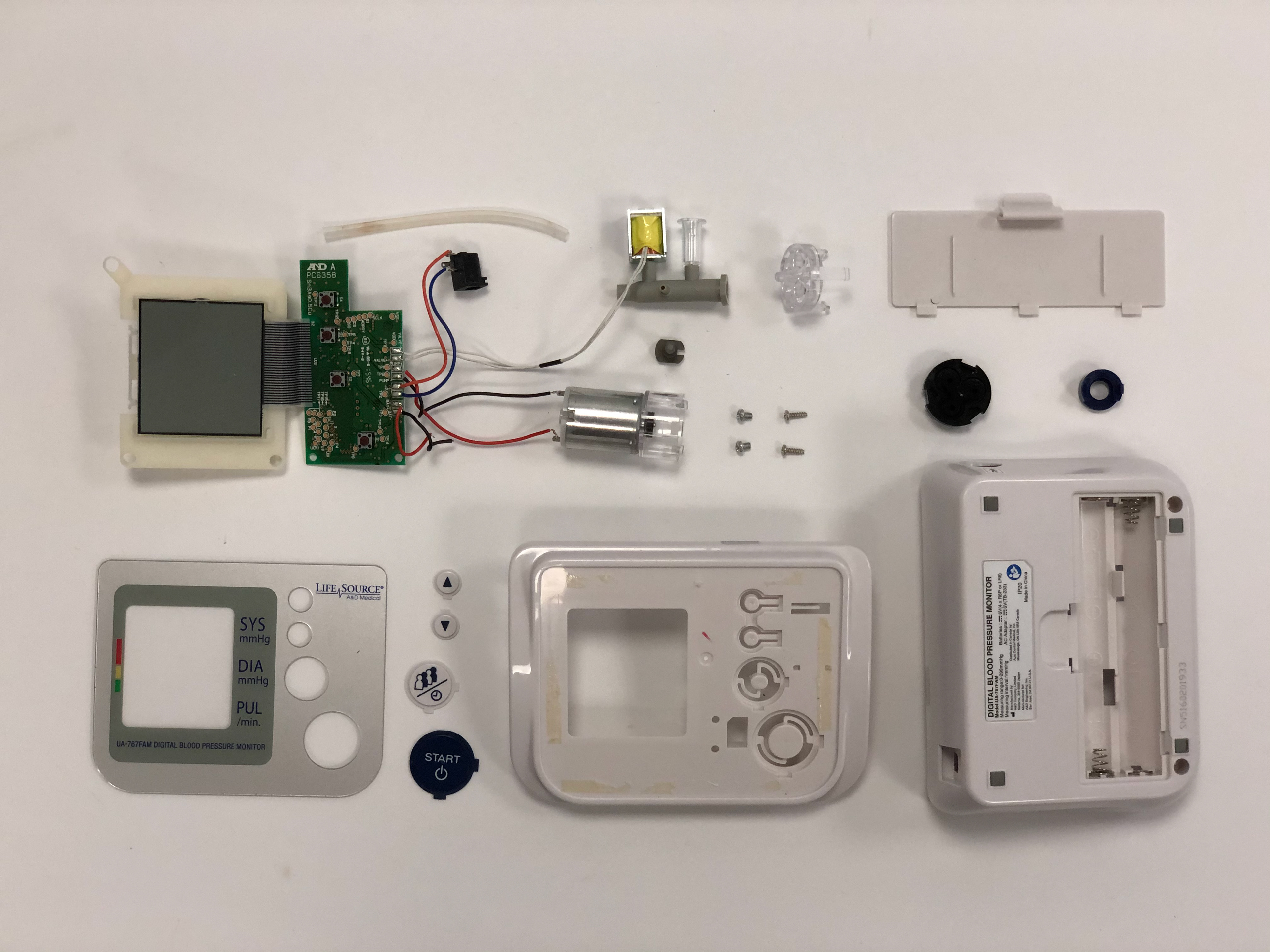
As a small group, an existing digital blood pressure monitor was analyzed. The group went through use, storage, and interface analysis. The product was also taken apart to determine how it worked, the necessary components, and their placement. These findings were used to determine current design strengths and weaknesses, and product dimensions.
CONCEPT DEVELOPMENT
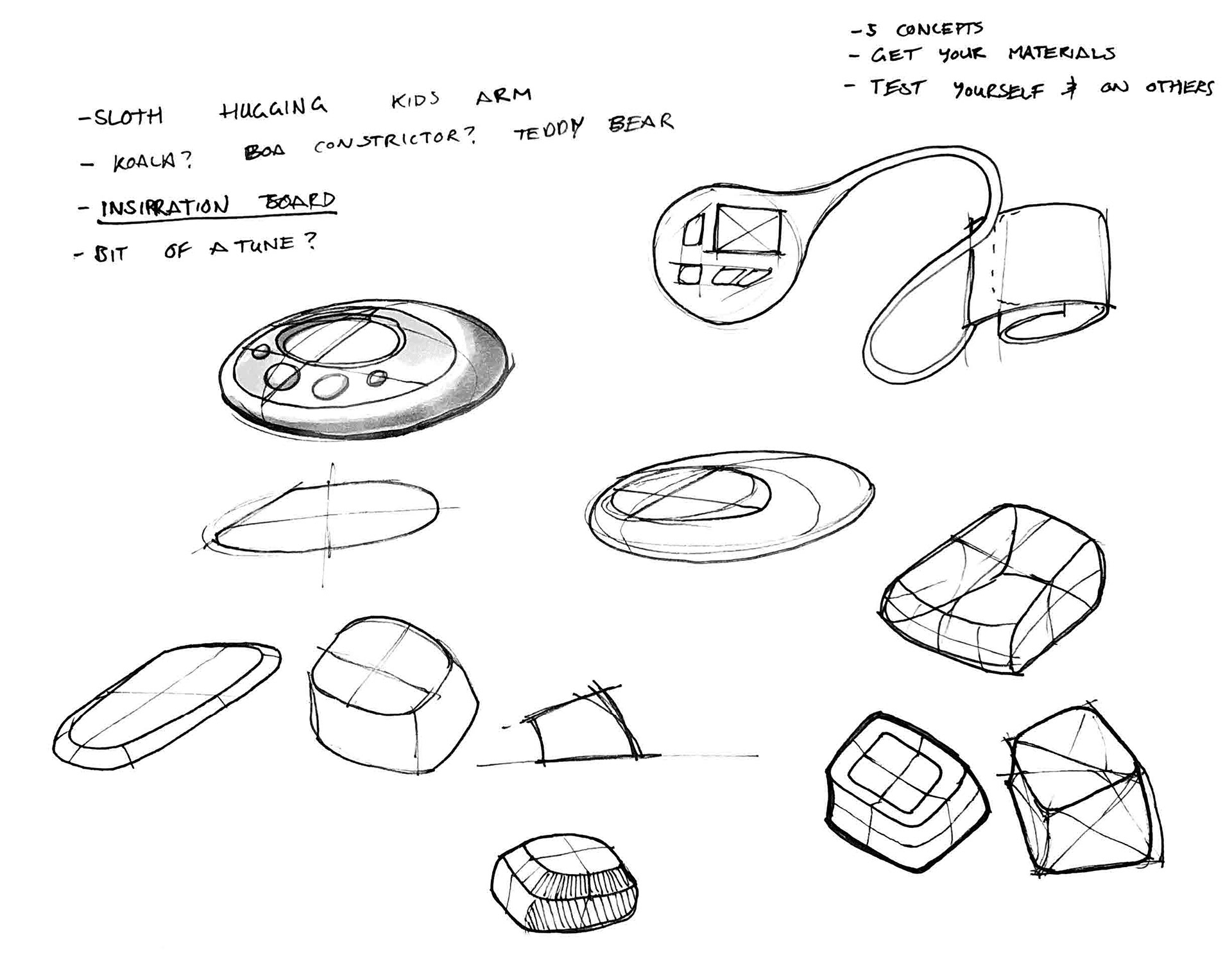

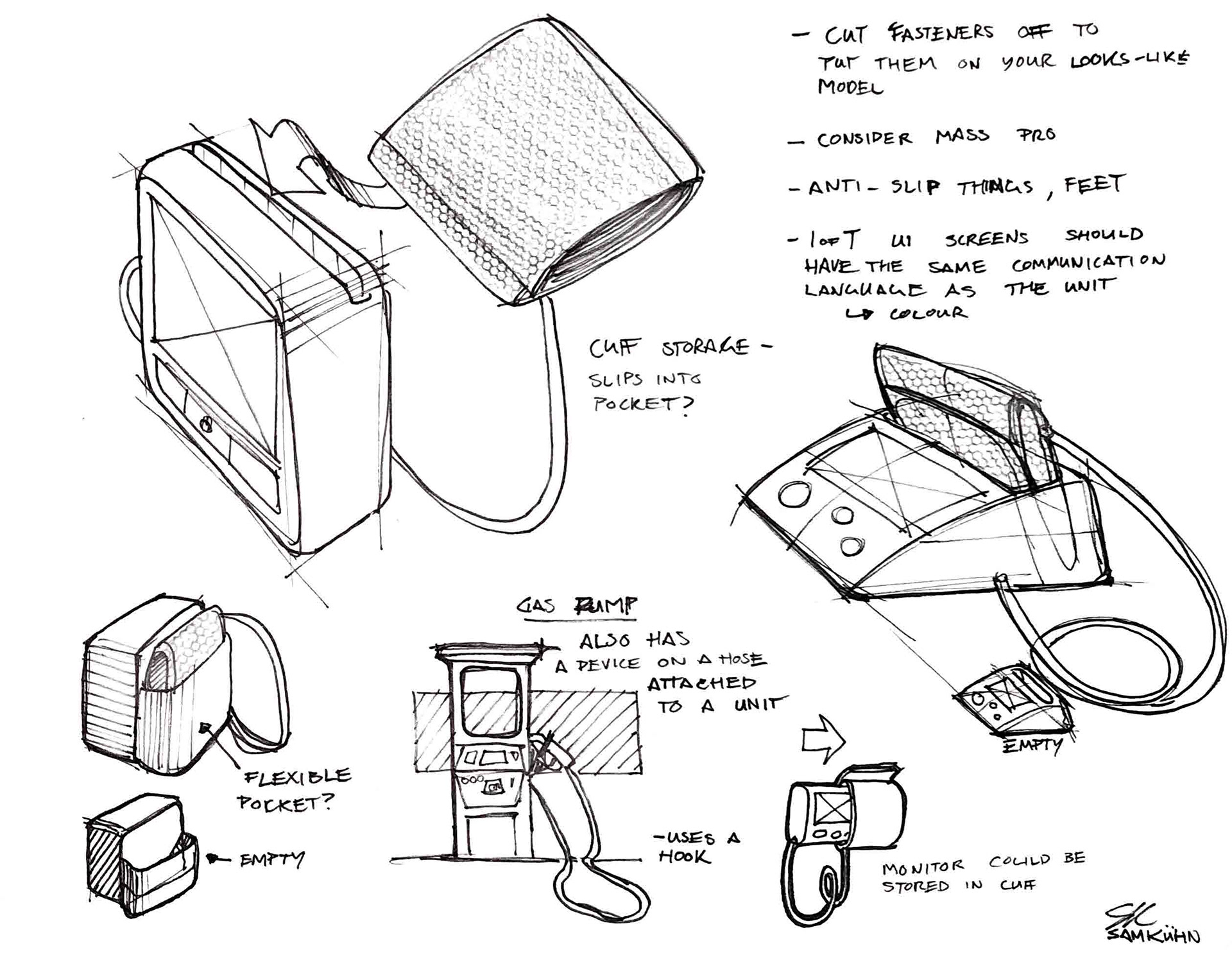
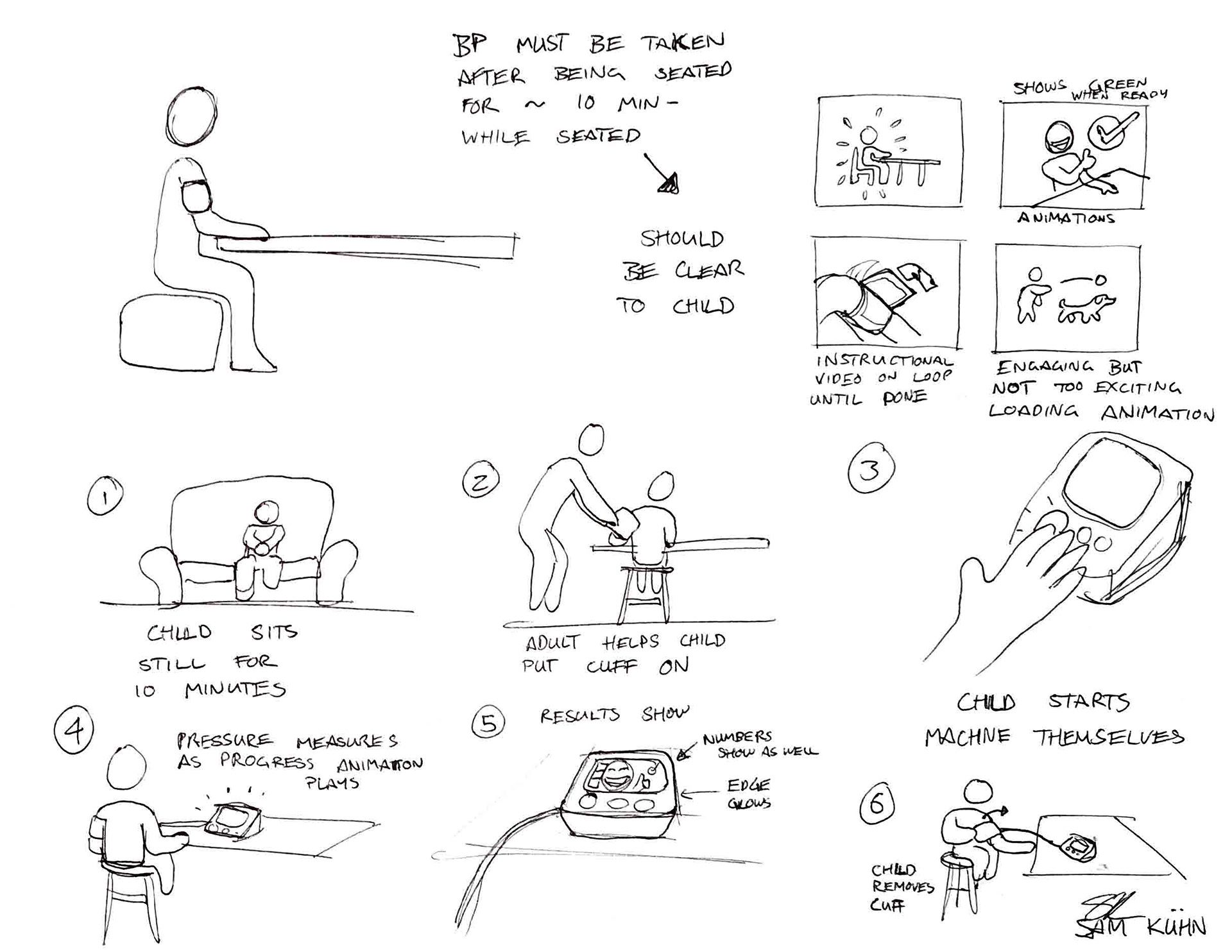
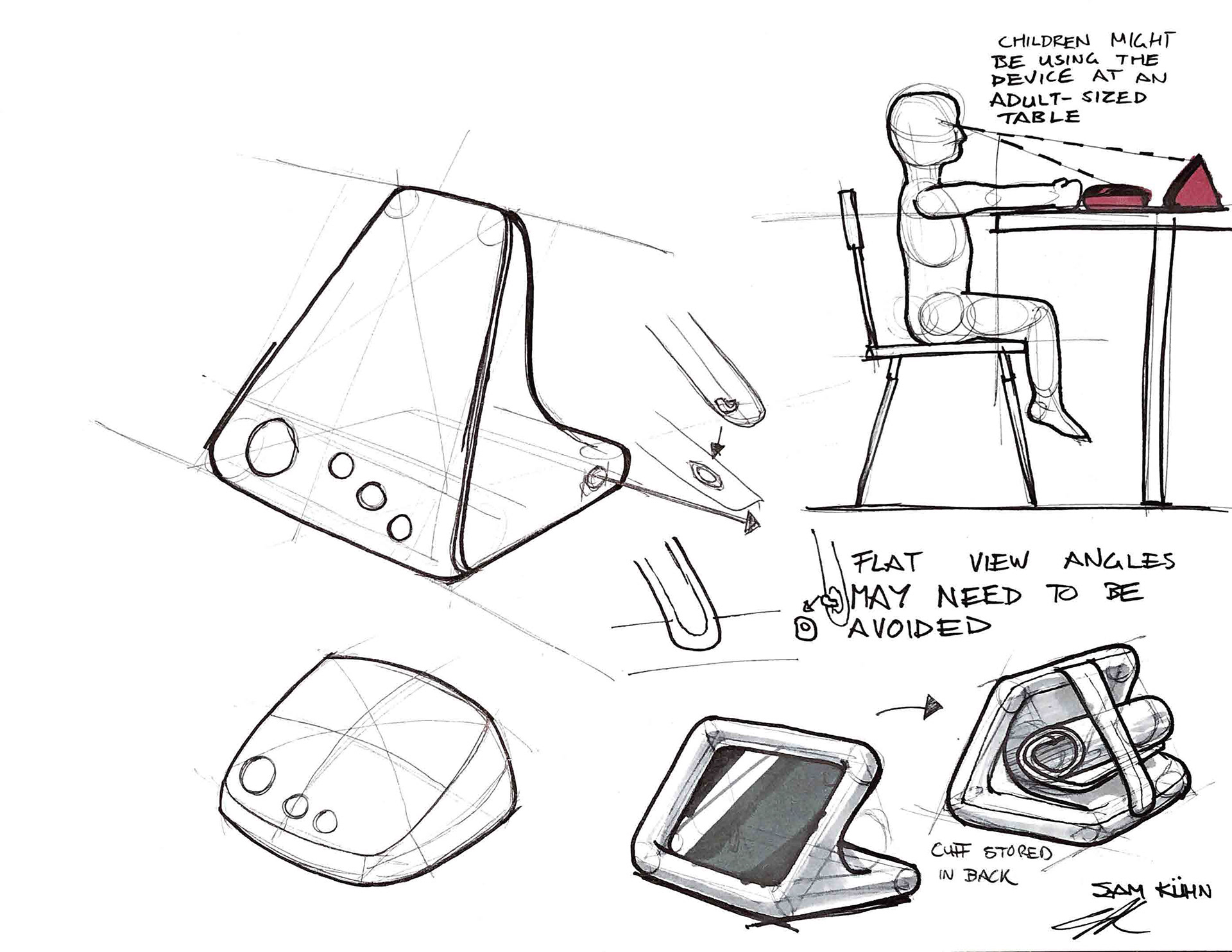
The idea is that the child will be more involved and therefore understand the procedure better, which will make them more comfortable during the blood pressure monitoring process.
Early form development was based on round, soft, and easily understood shapes. One concept that came from this phase was a smooth relationship between the device and the air tube, adding to the sense of playfulness. The use cycle was considered as well, and the child was incorporated as the main user. For safety reasons, an adult would need to be present for certain steps, but the goal was to involve the child as much as possible.
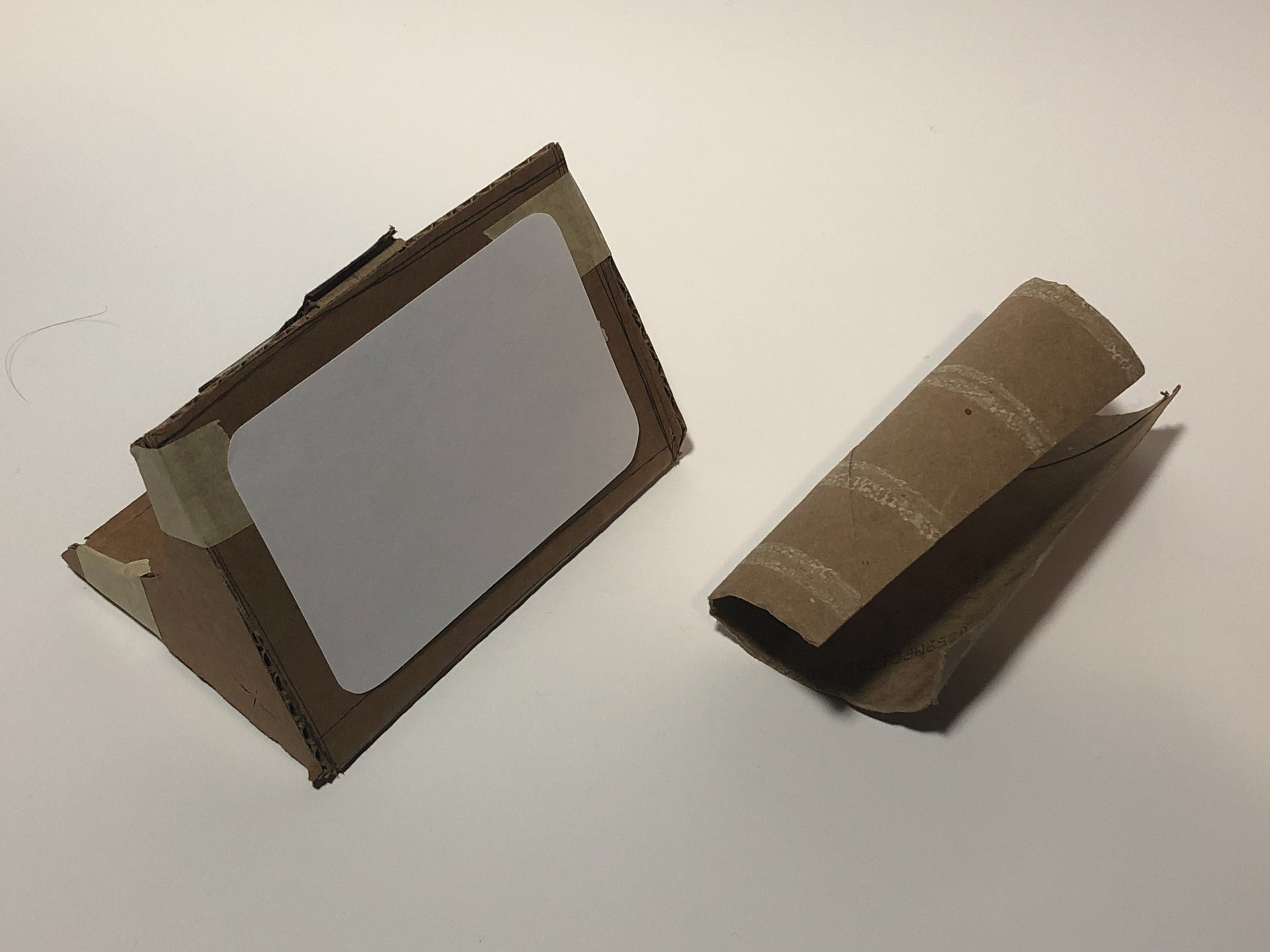
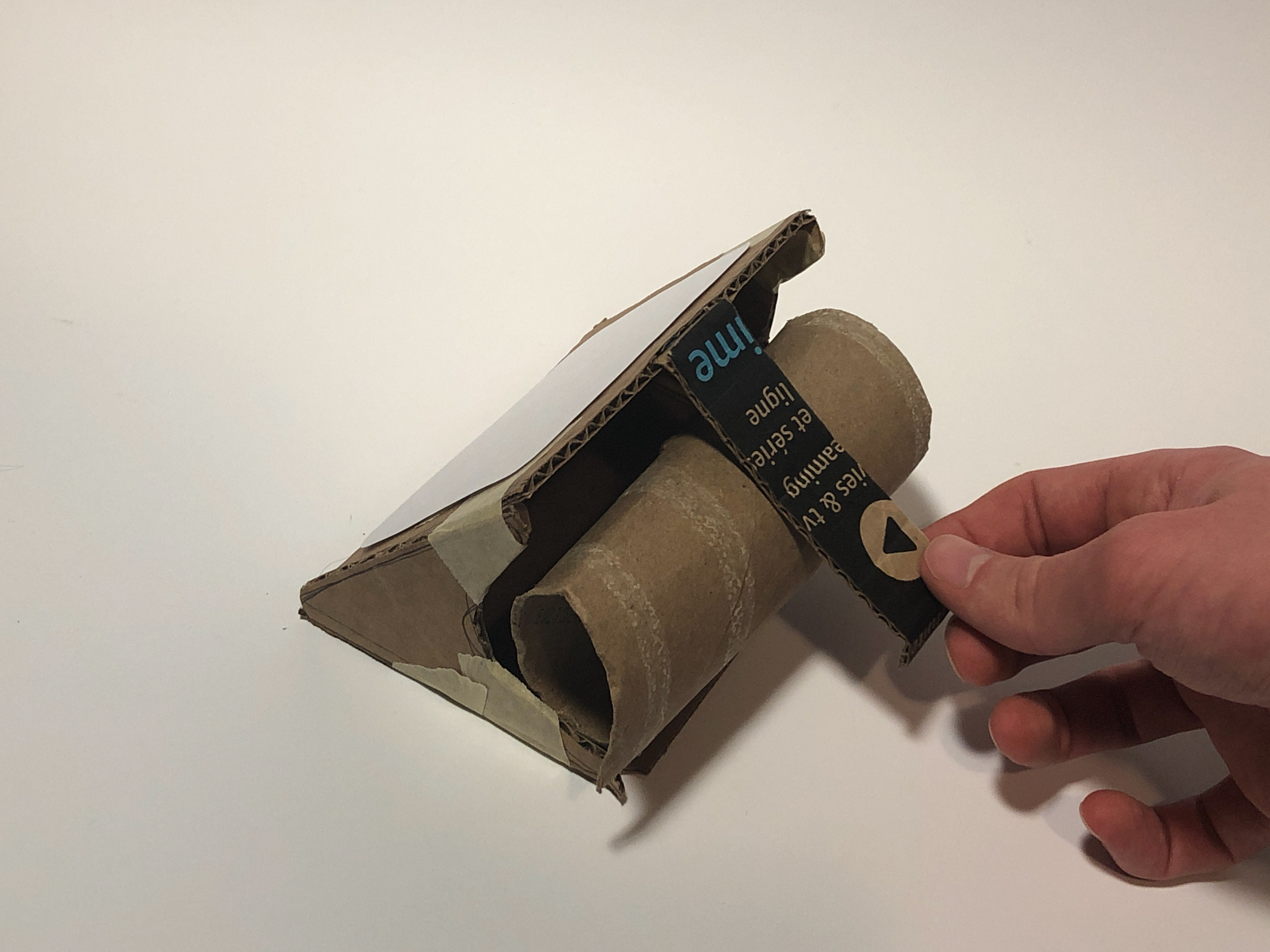
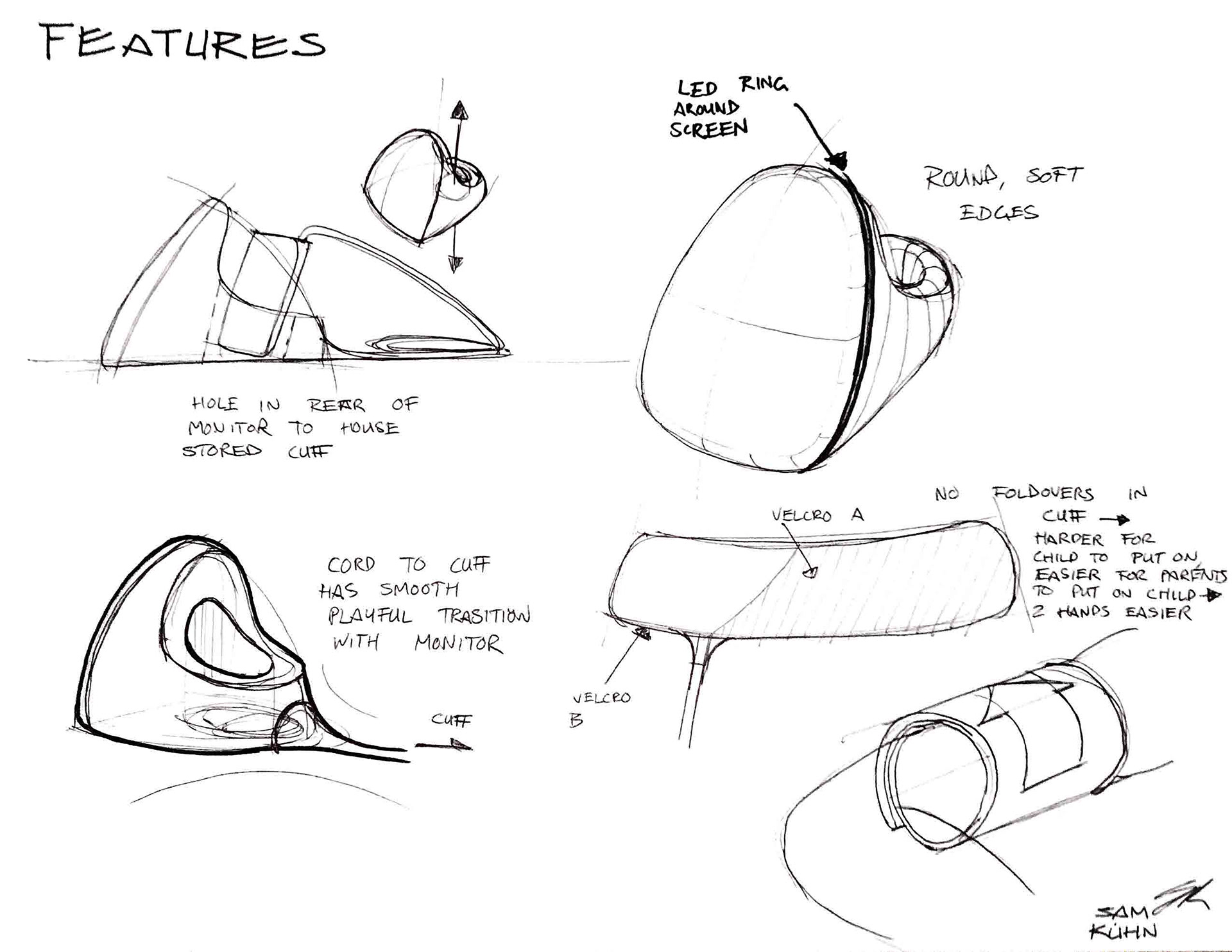
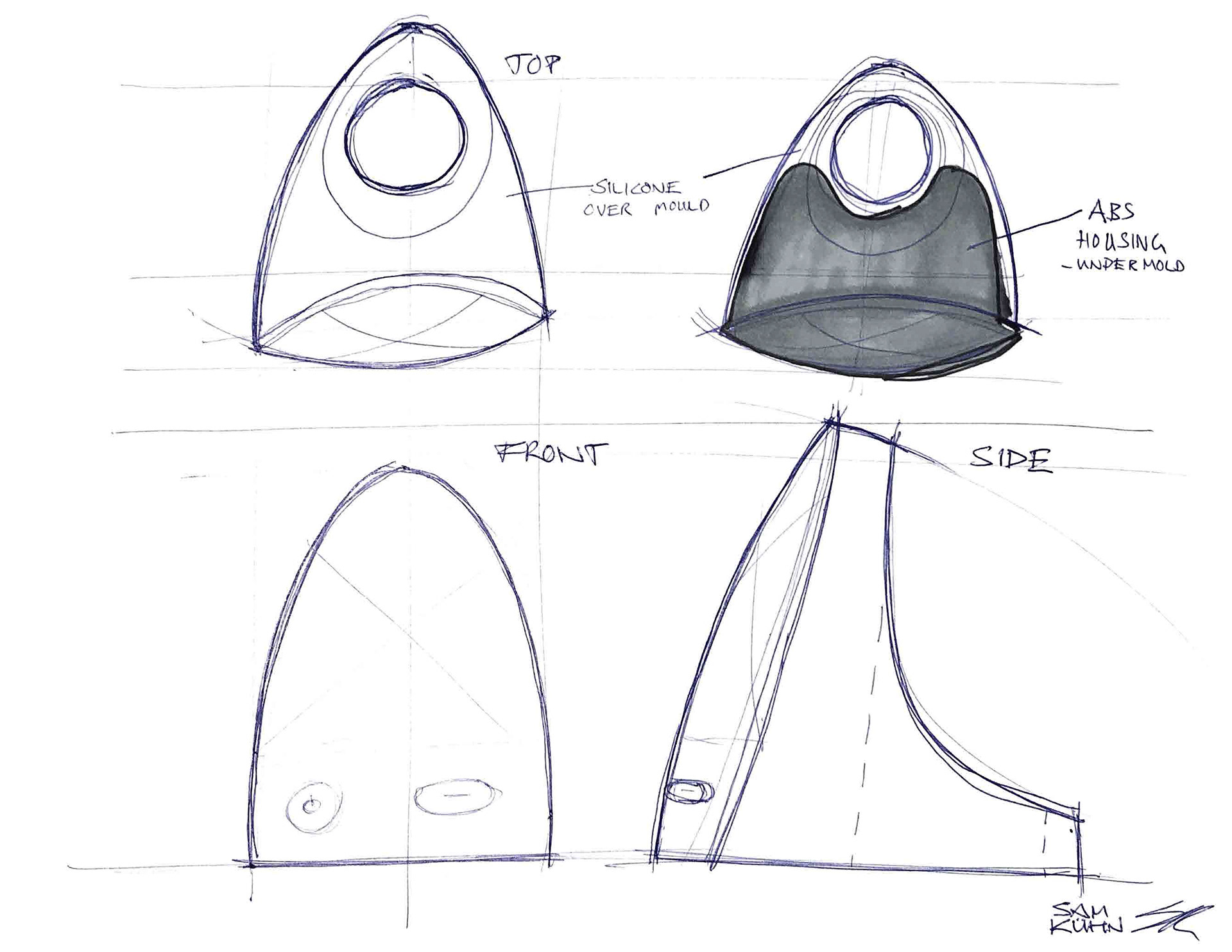

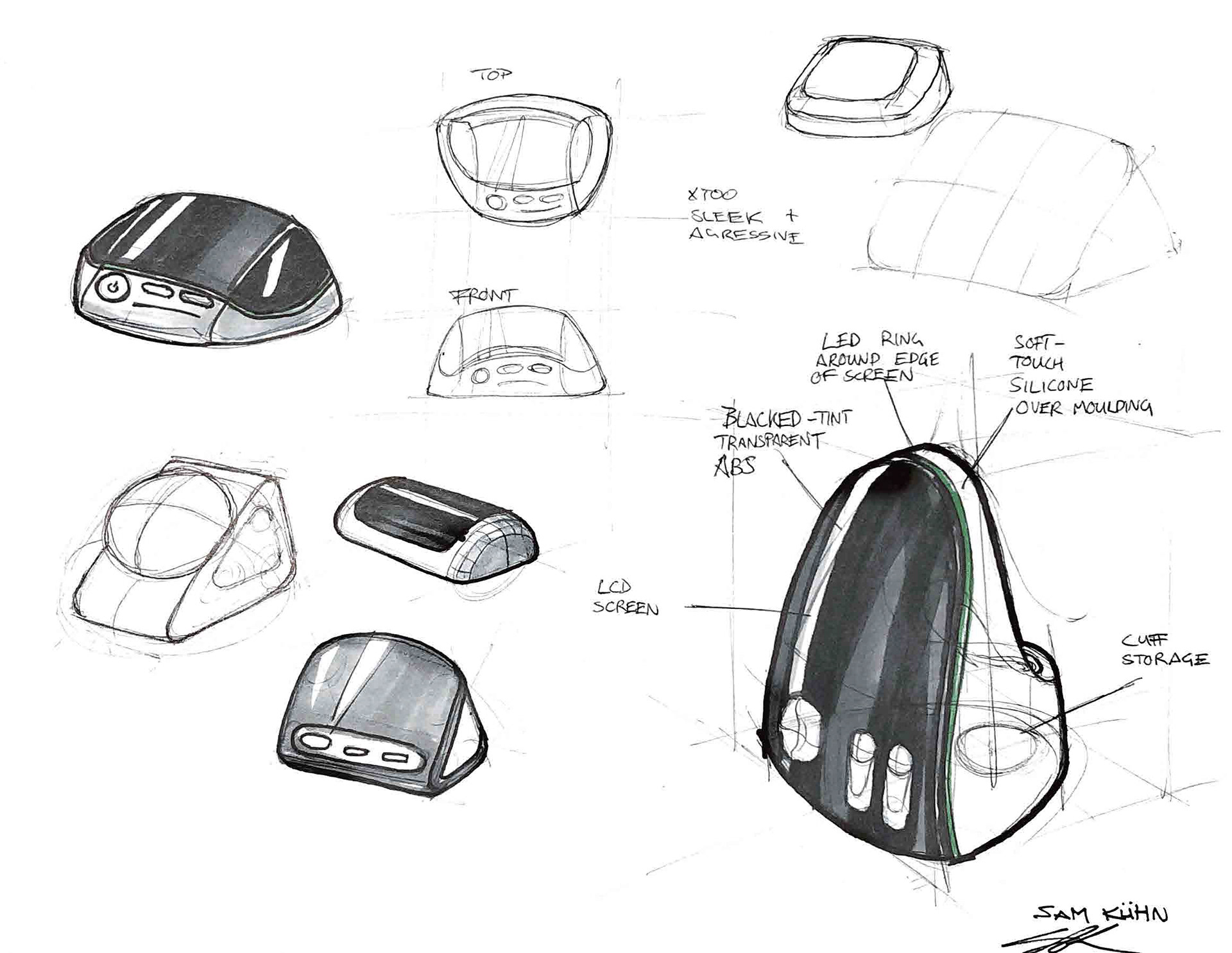
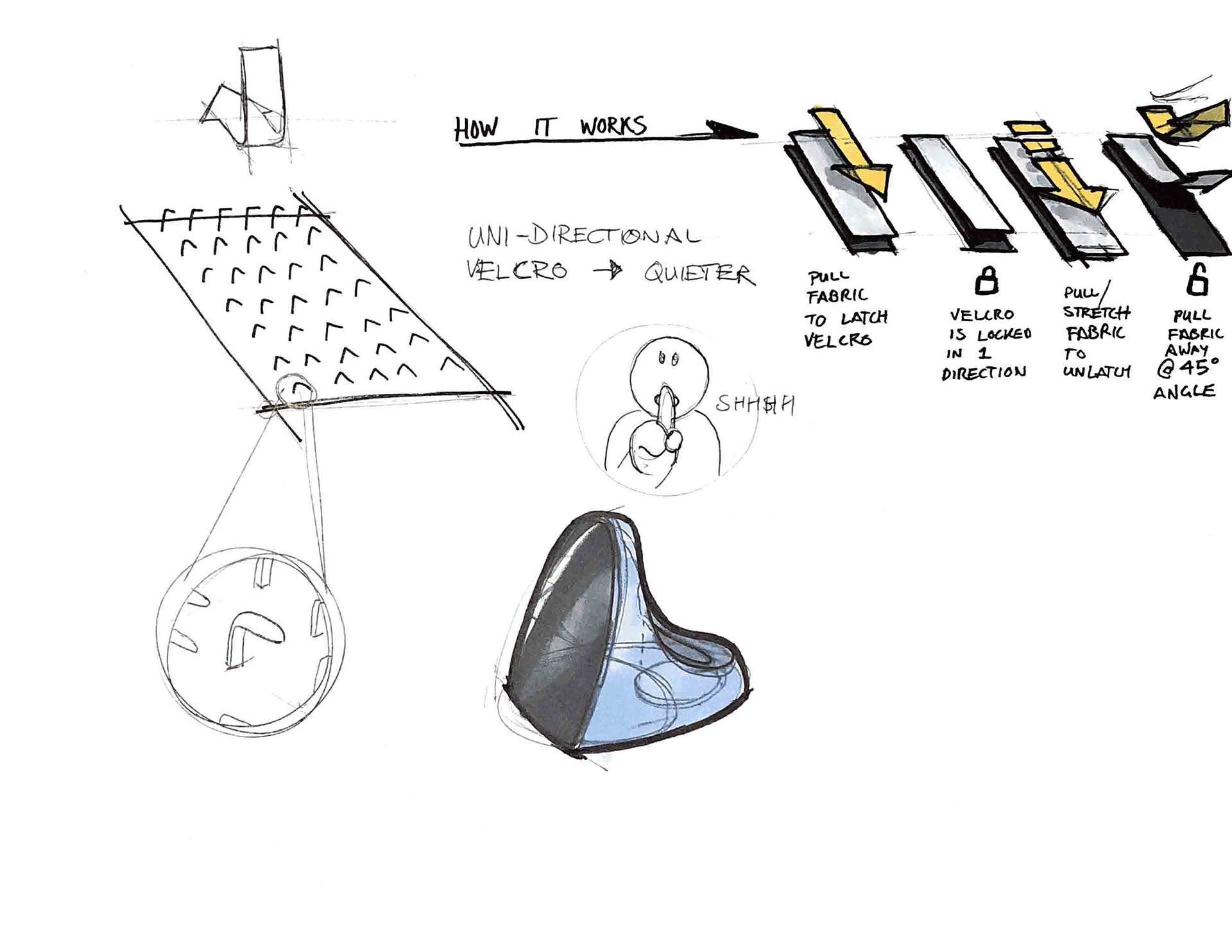
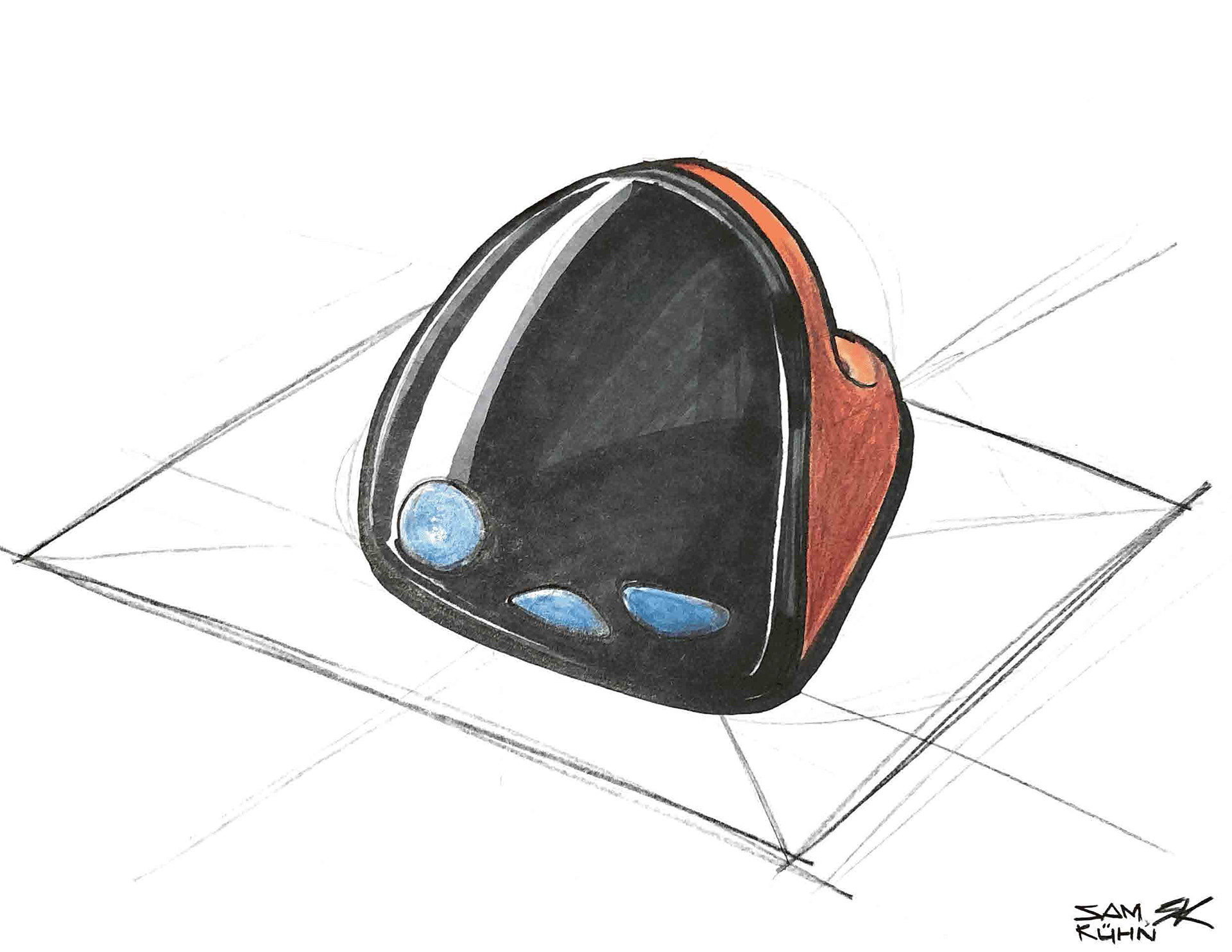
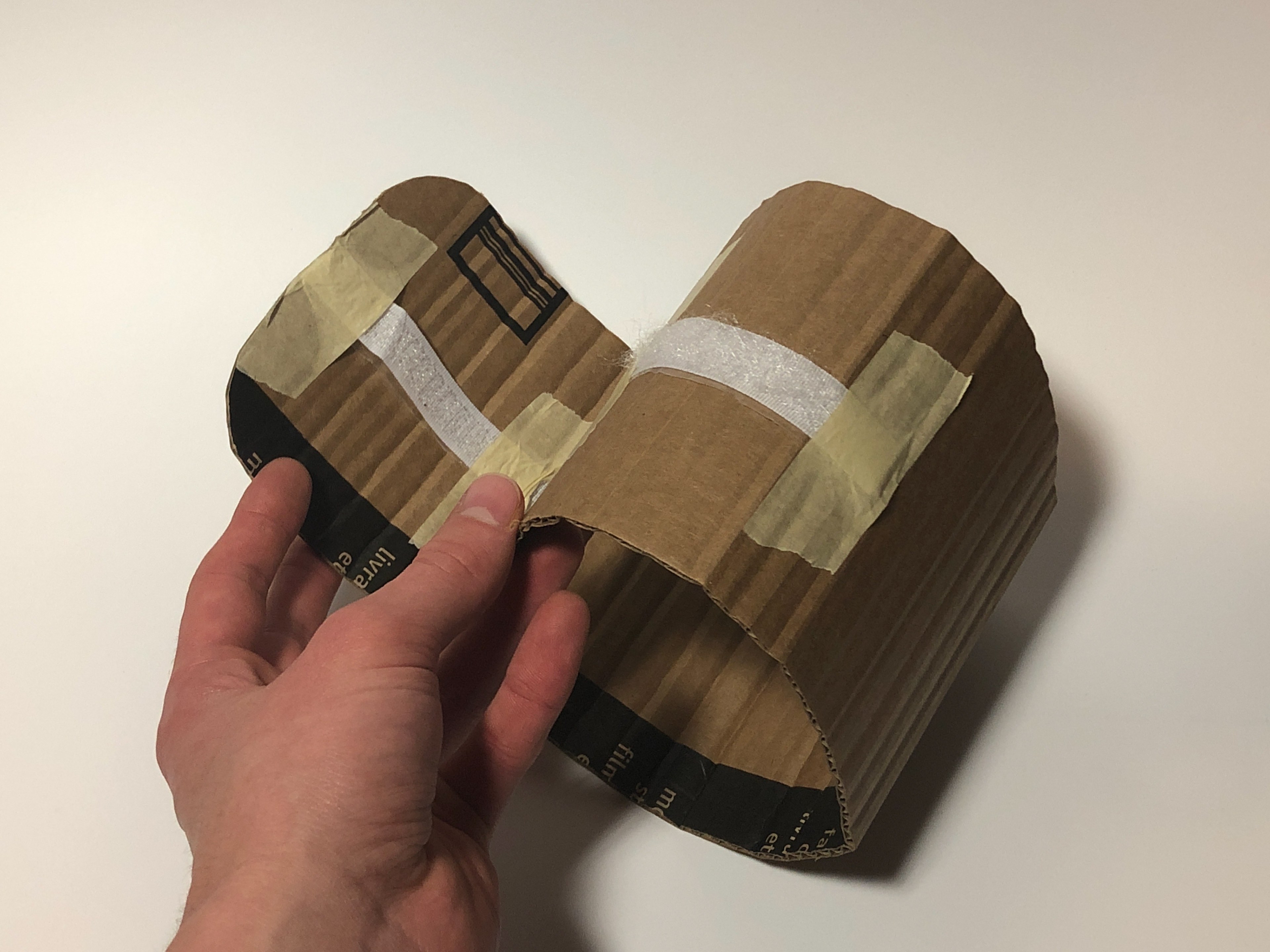
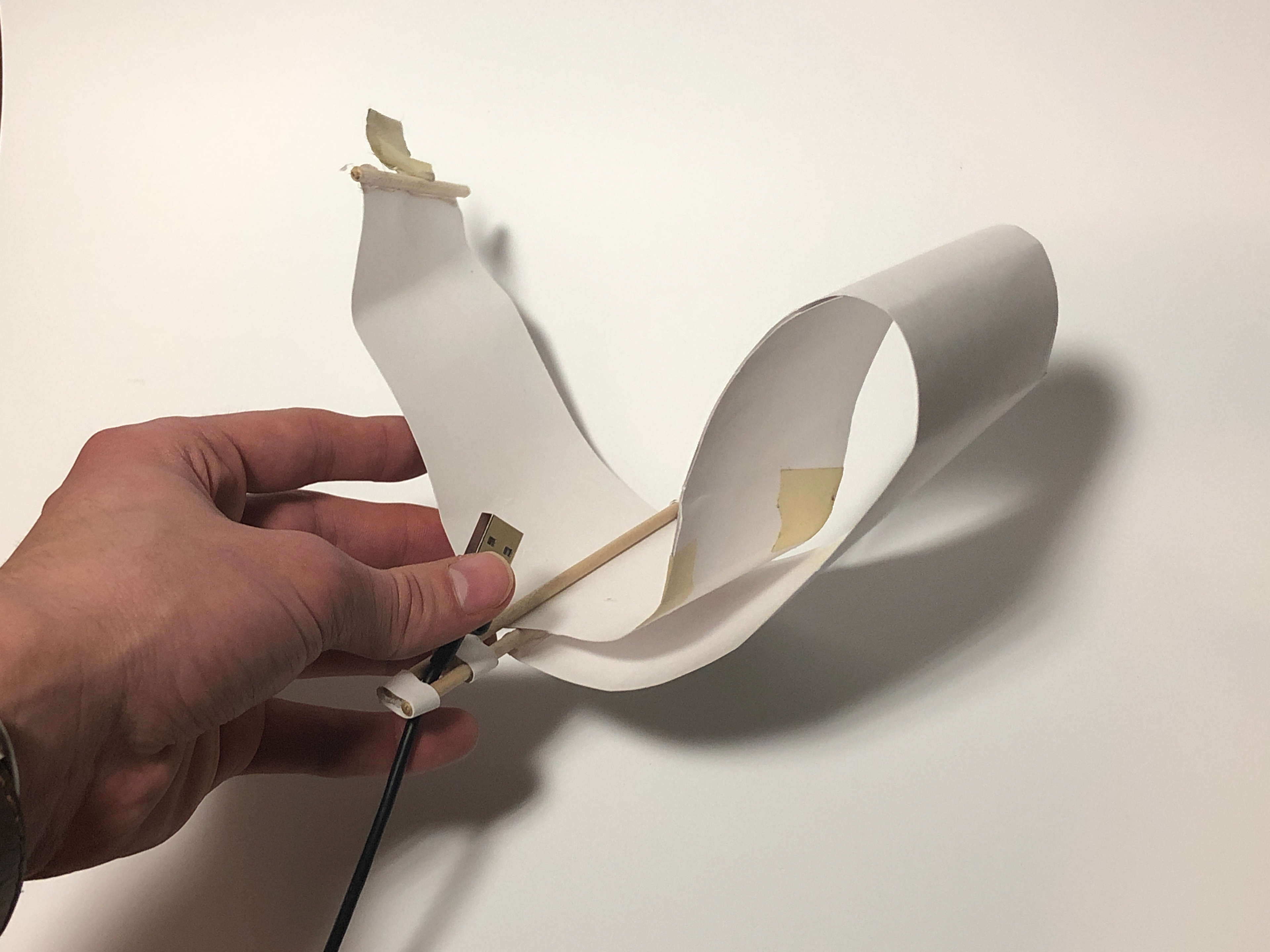
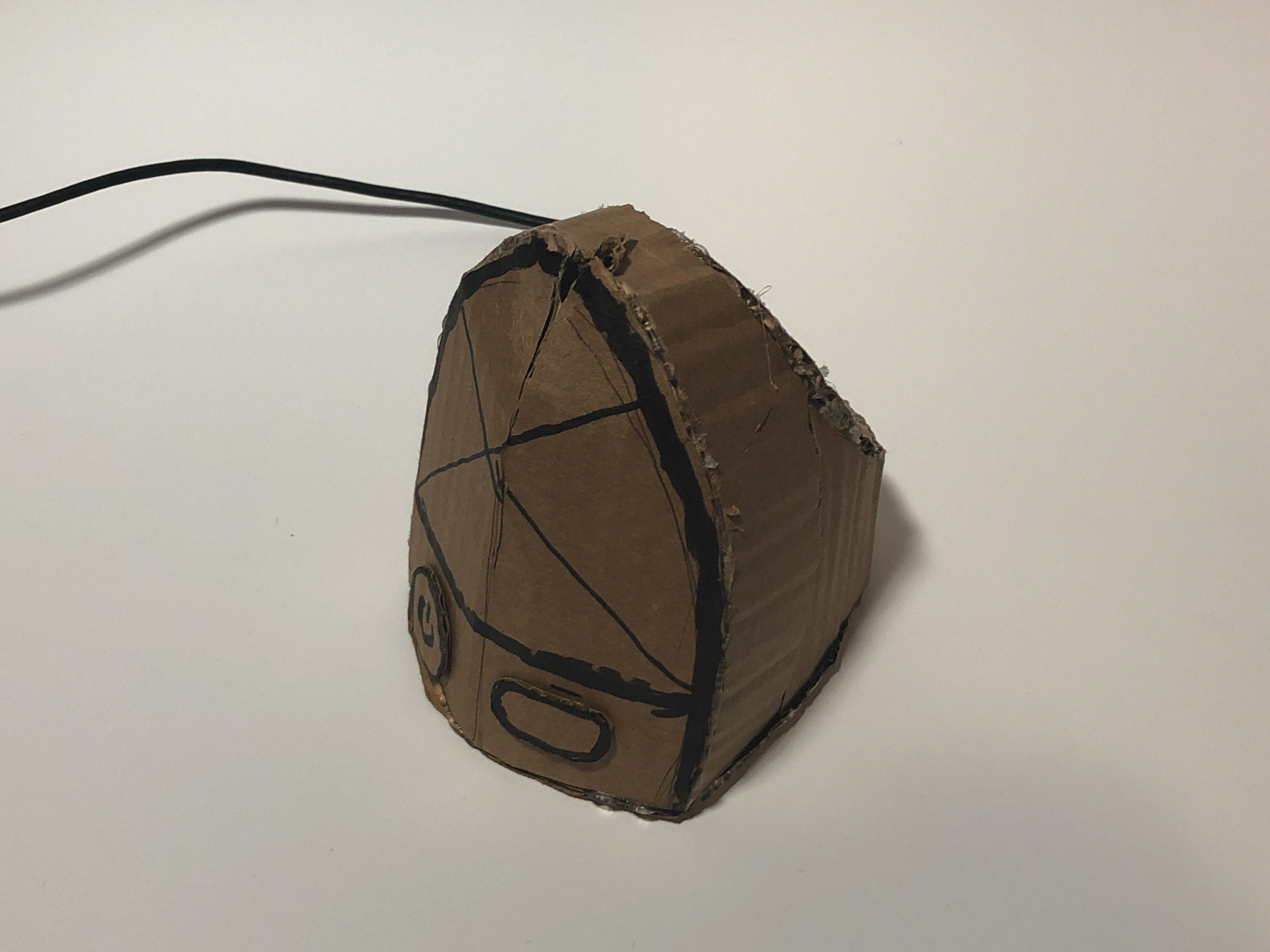

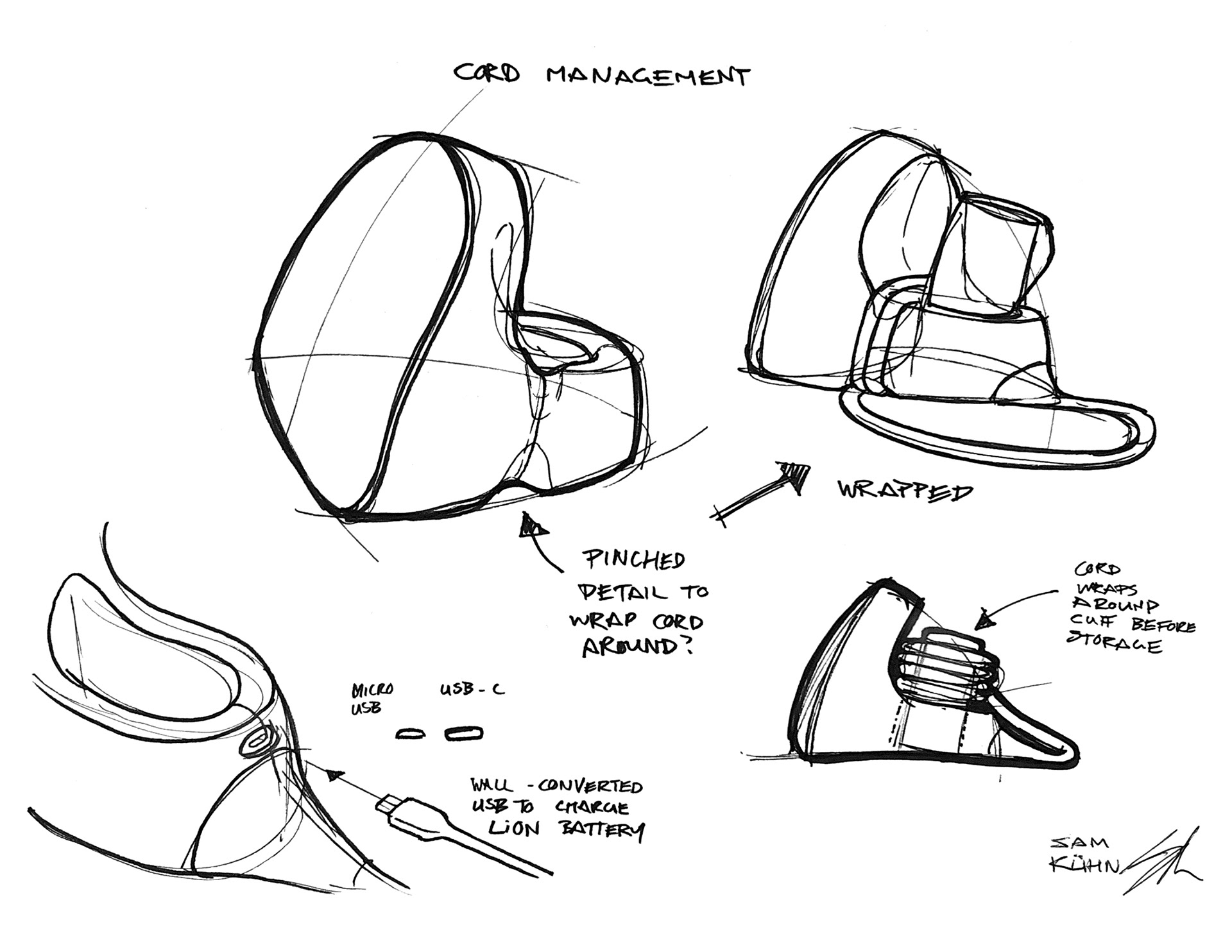
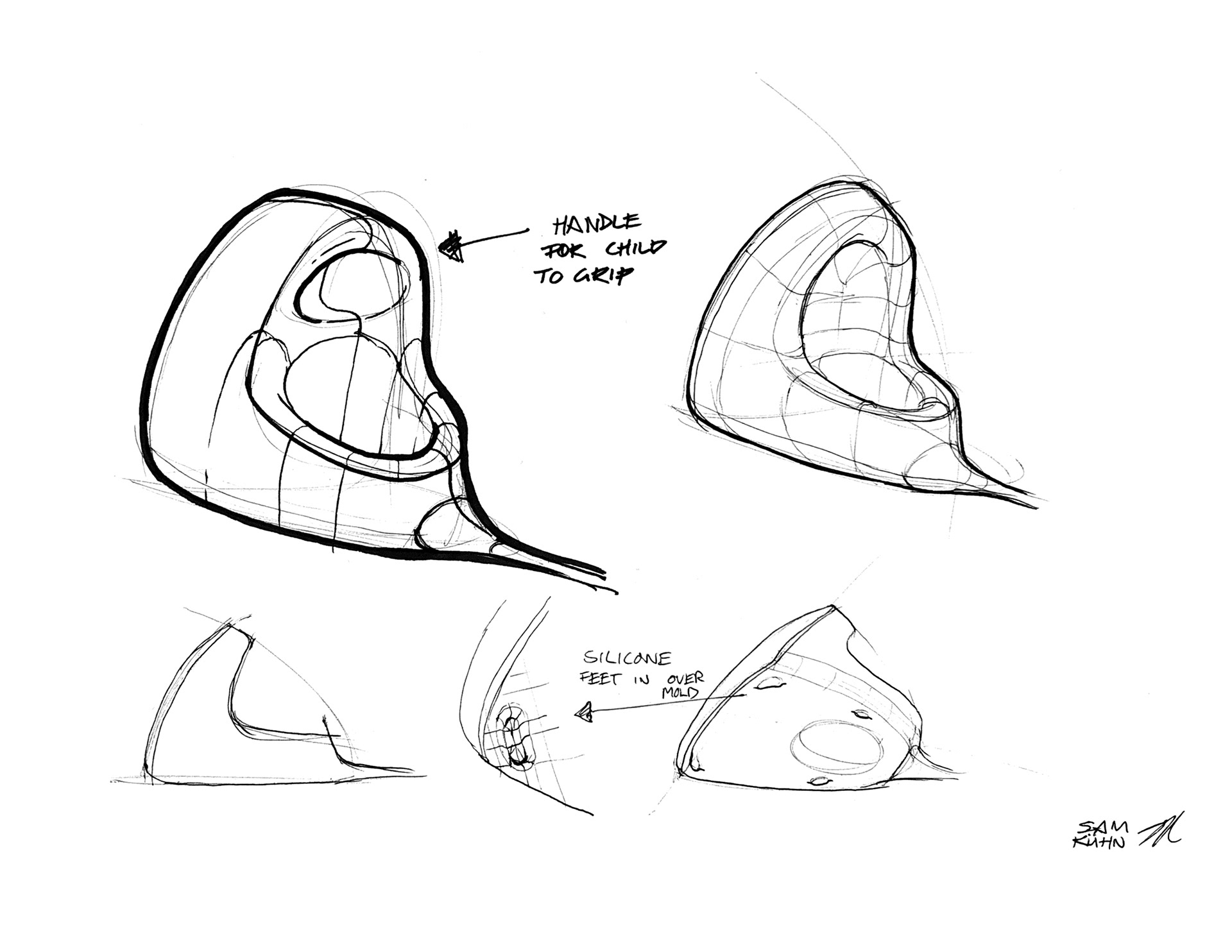

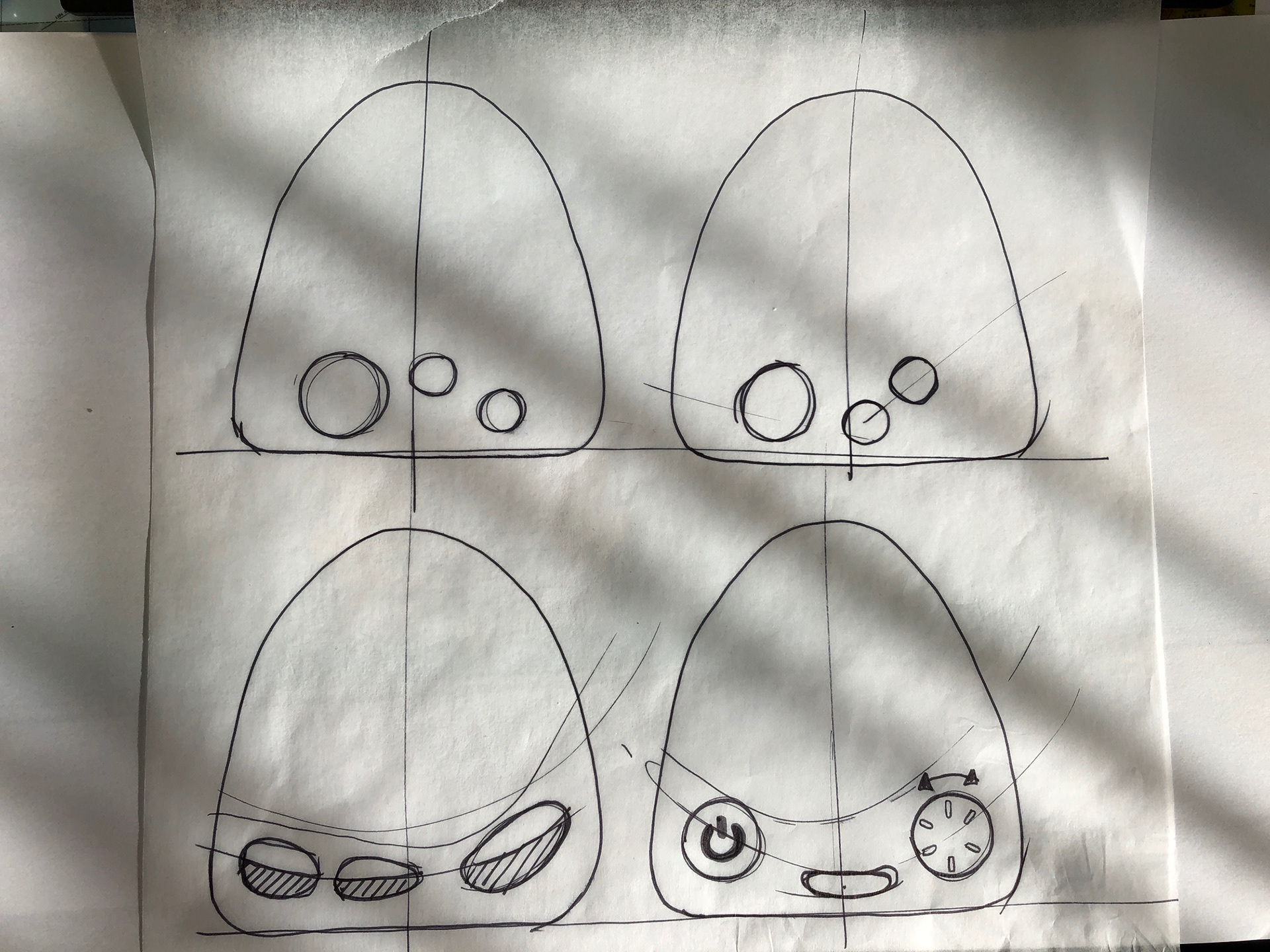


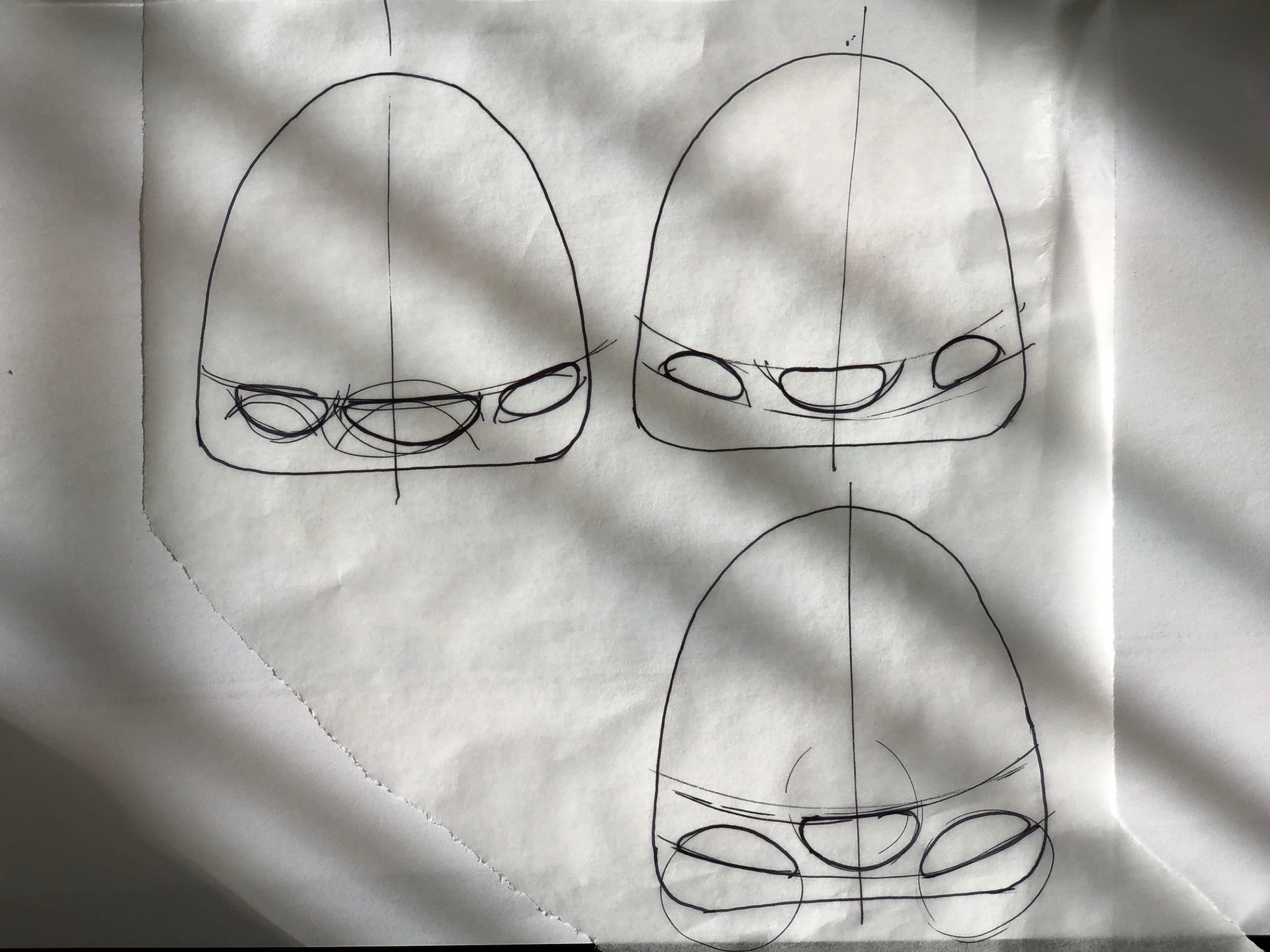
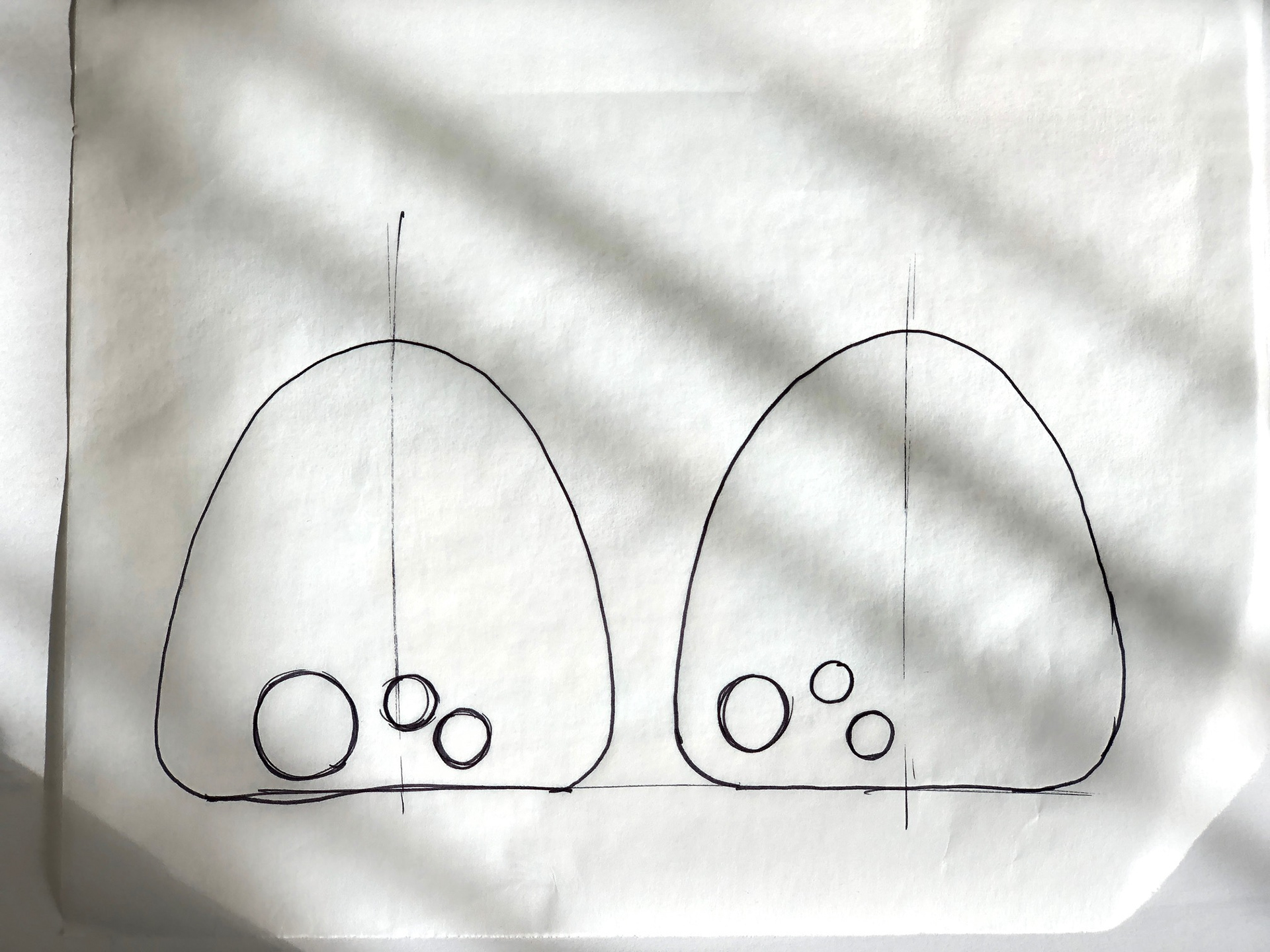
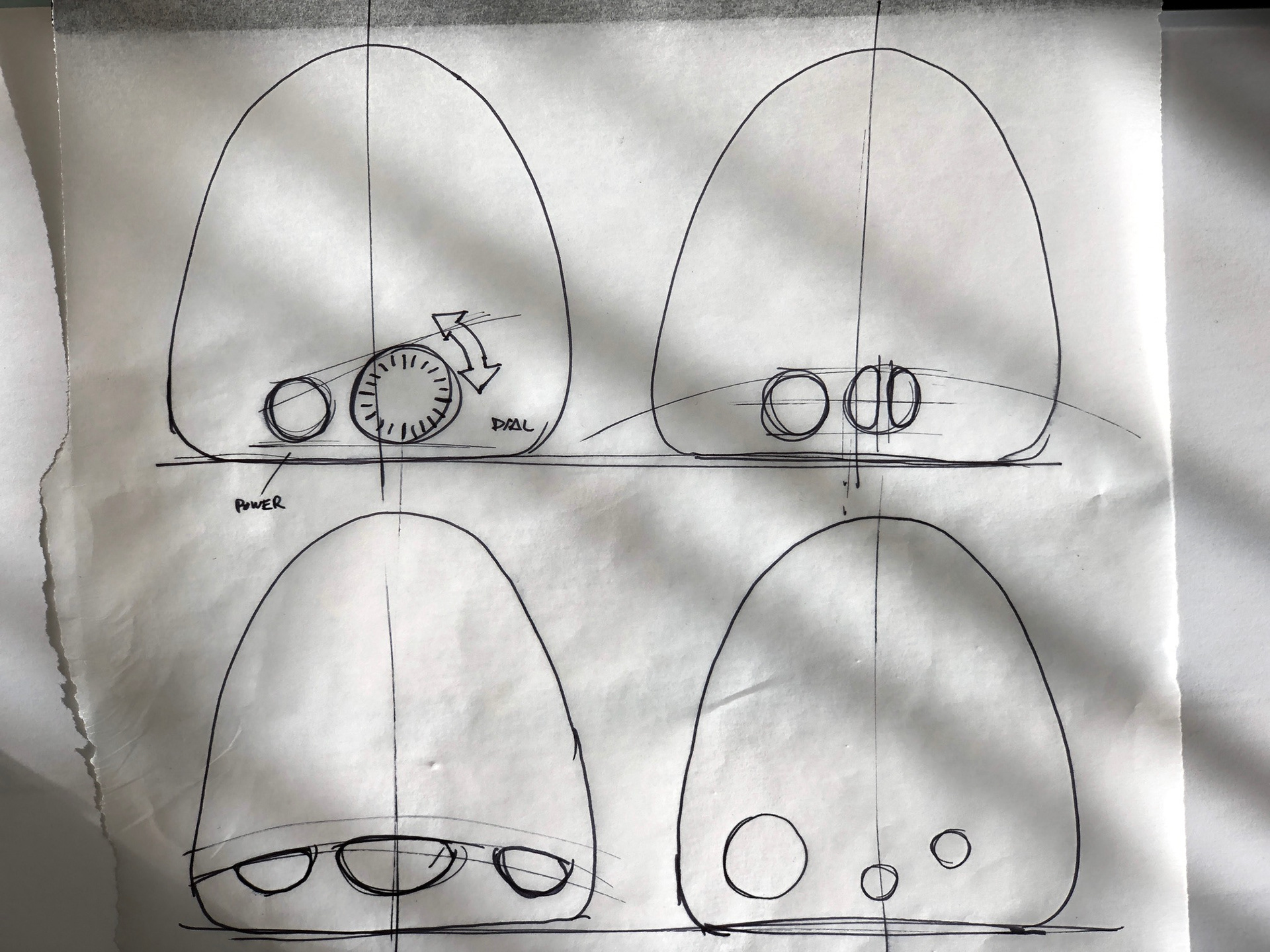
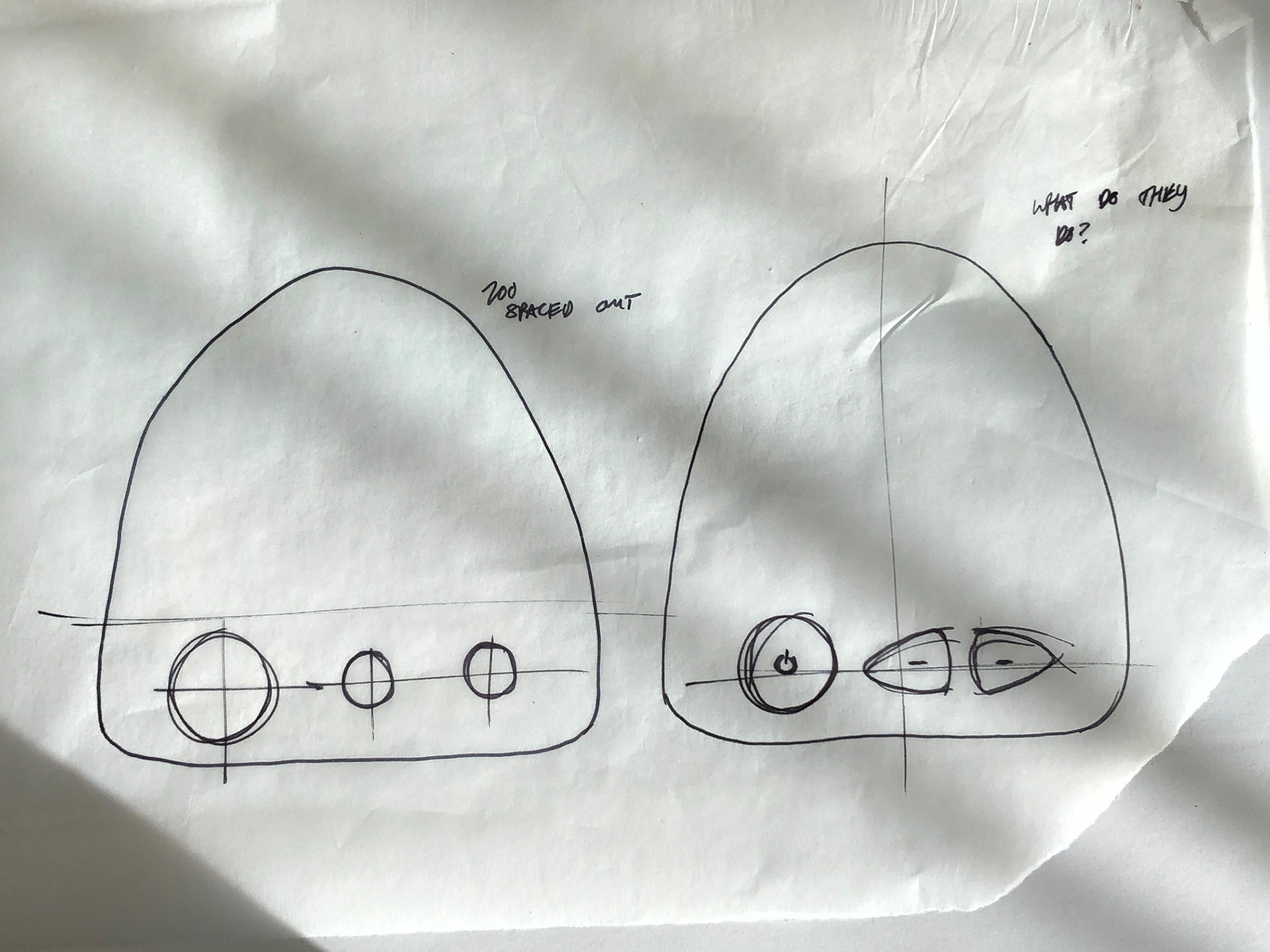


During concept development, issues such as cuff fastening, cuff storage, cord management, portability, screen angle, power, button layout and many others were considered. Below is the first concept: a silicone over-molded device with a flexible pocket at the rear for storing the rolled cuff.
To make the device more playful and friendly, wheels were added to the back of the monitor. This concept blurred the lines between a medical procedure and play, ideally making the child more comfortable and able to relate more to the machine.
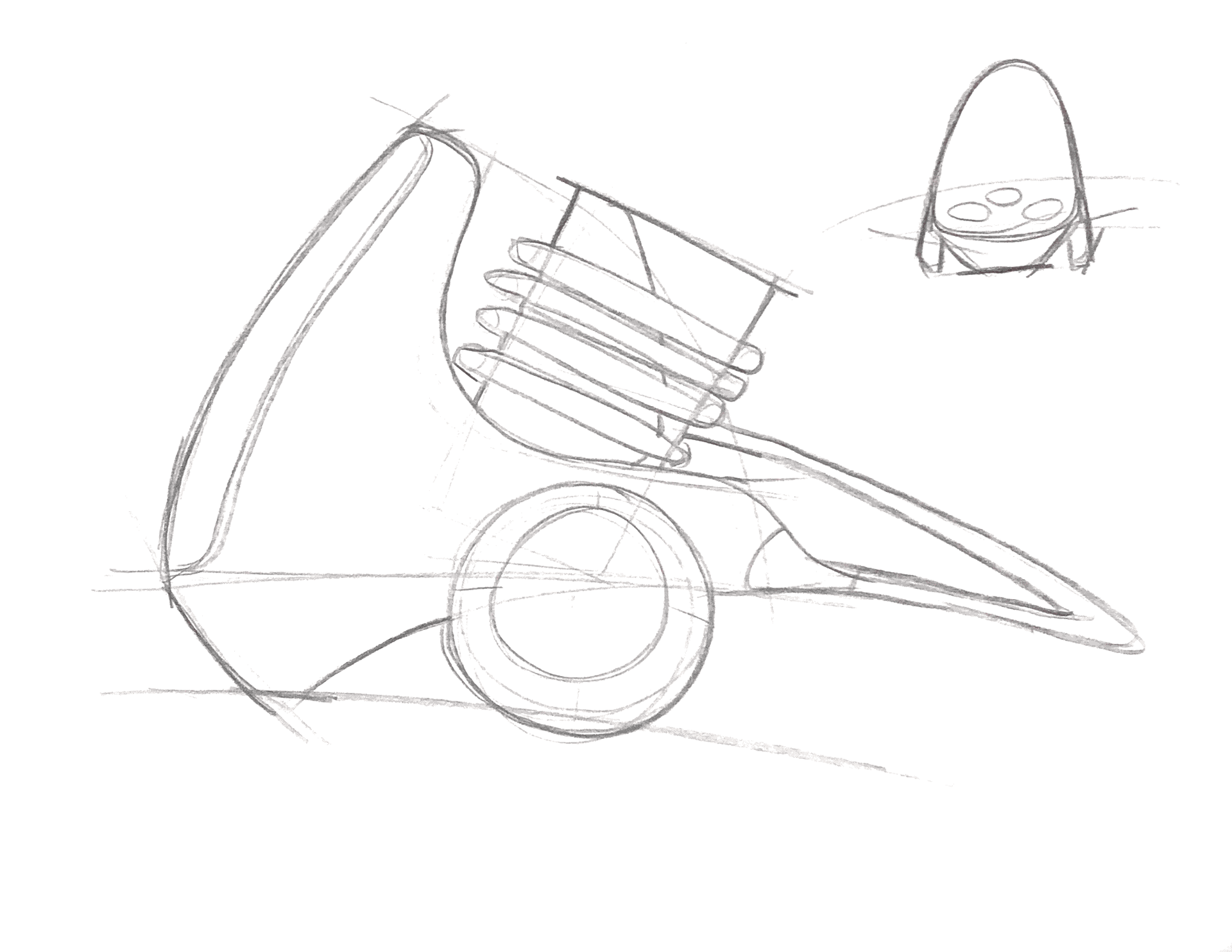
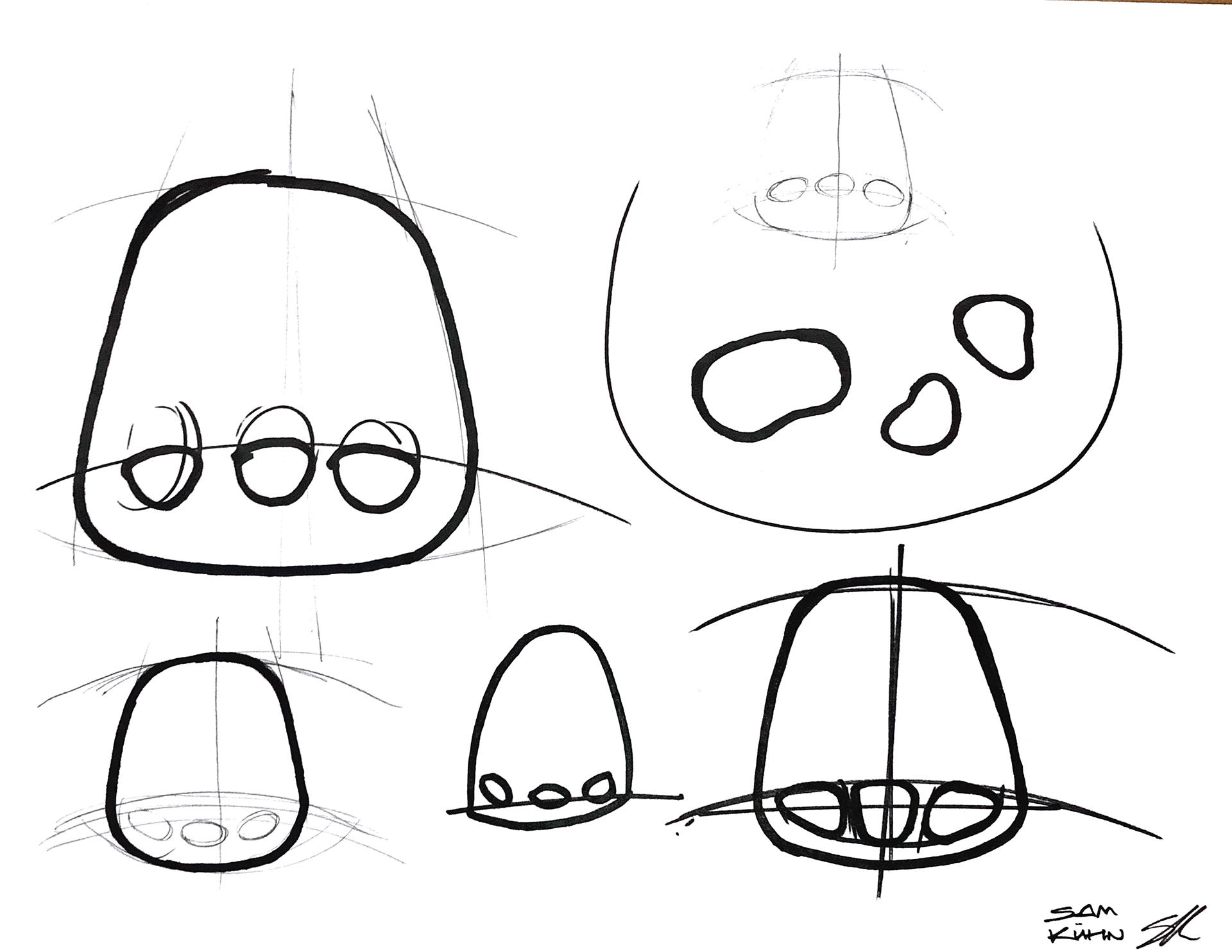
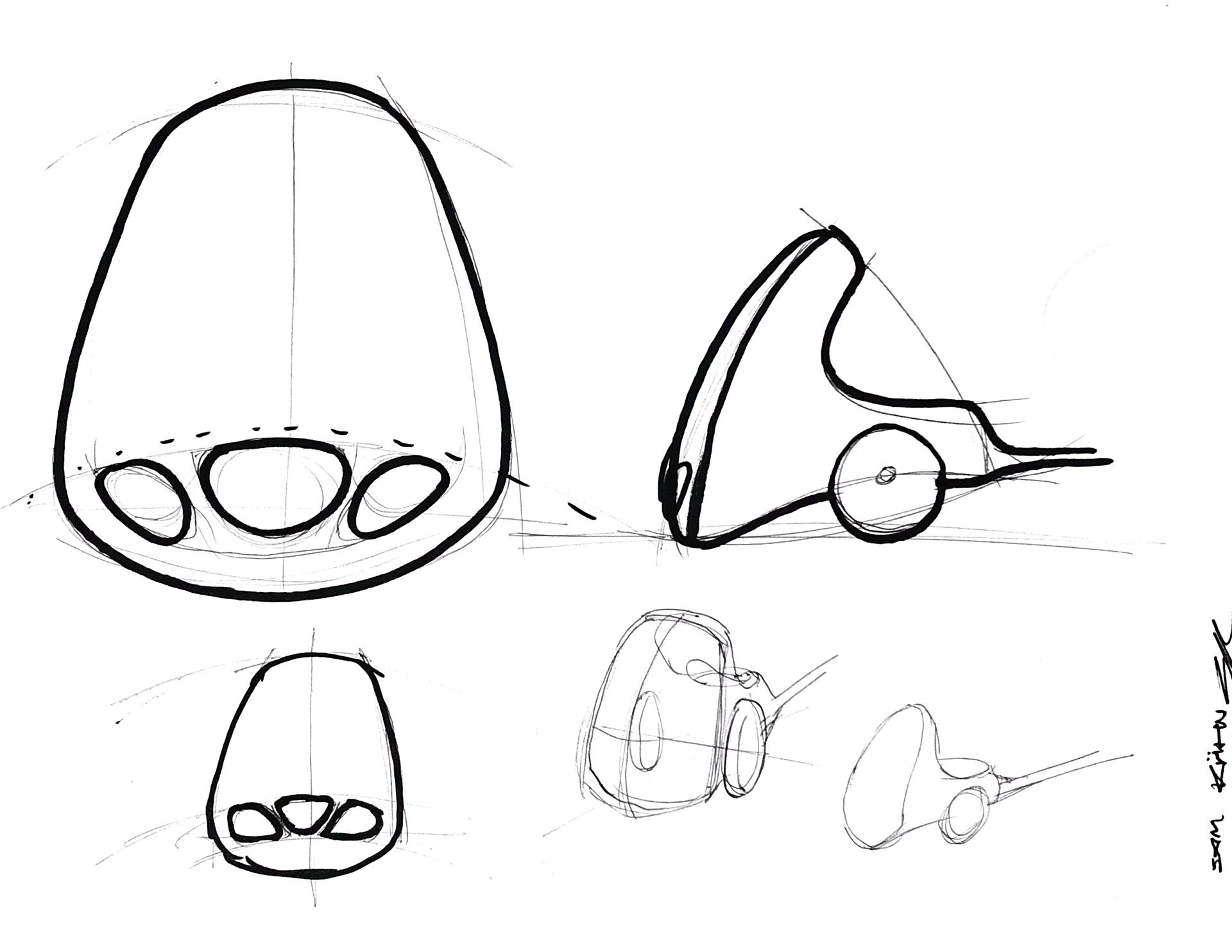
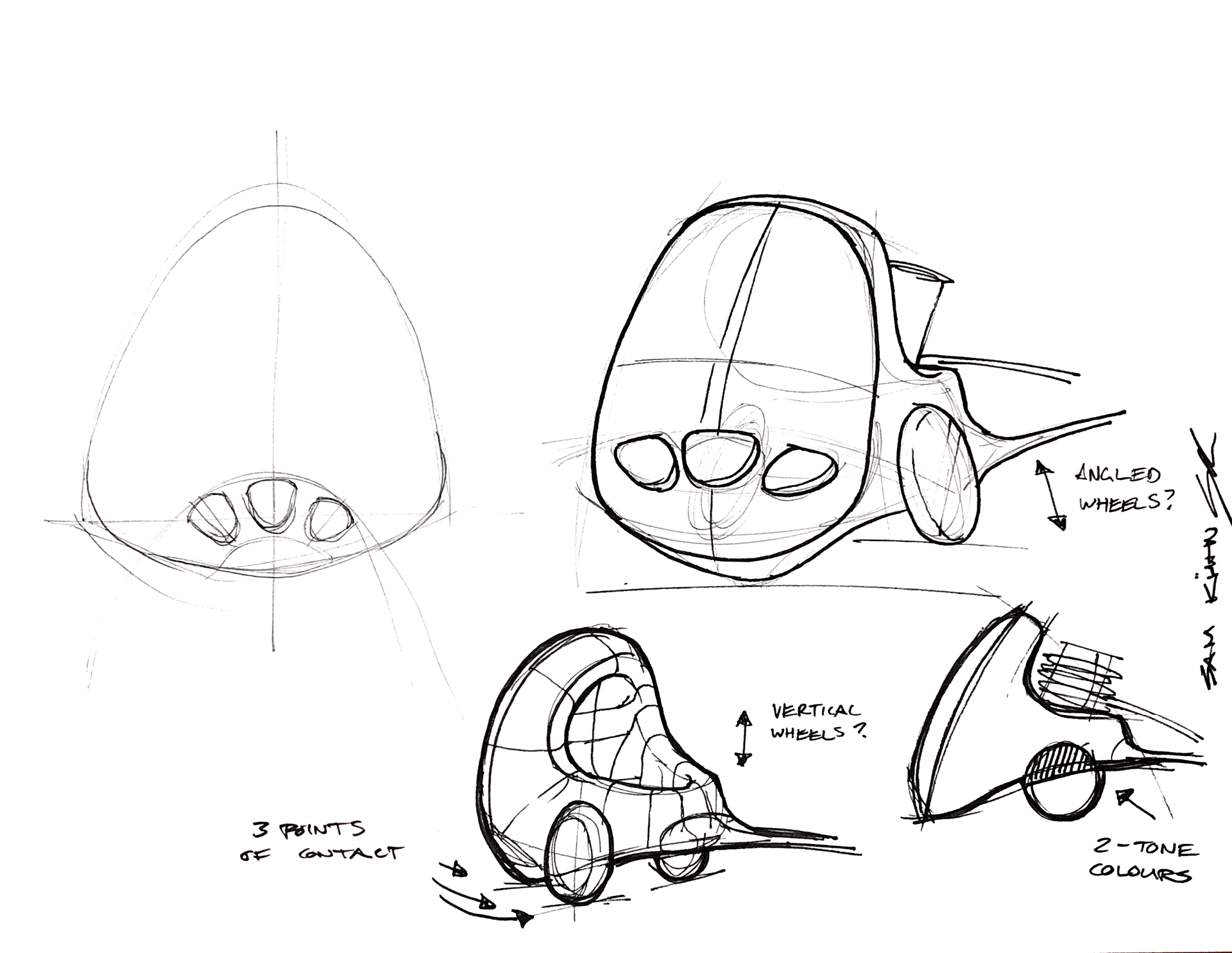
USER TESTING
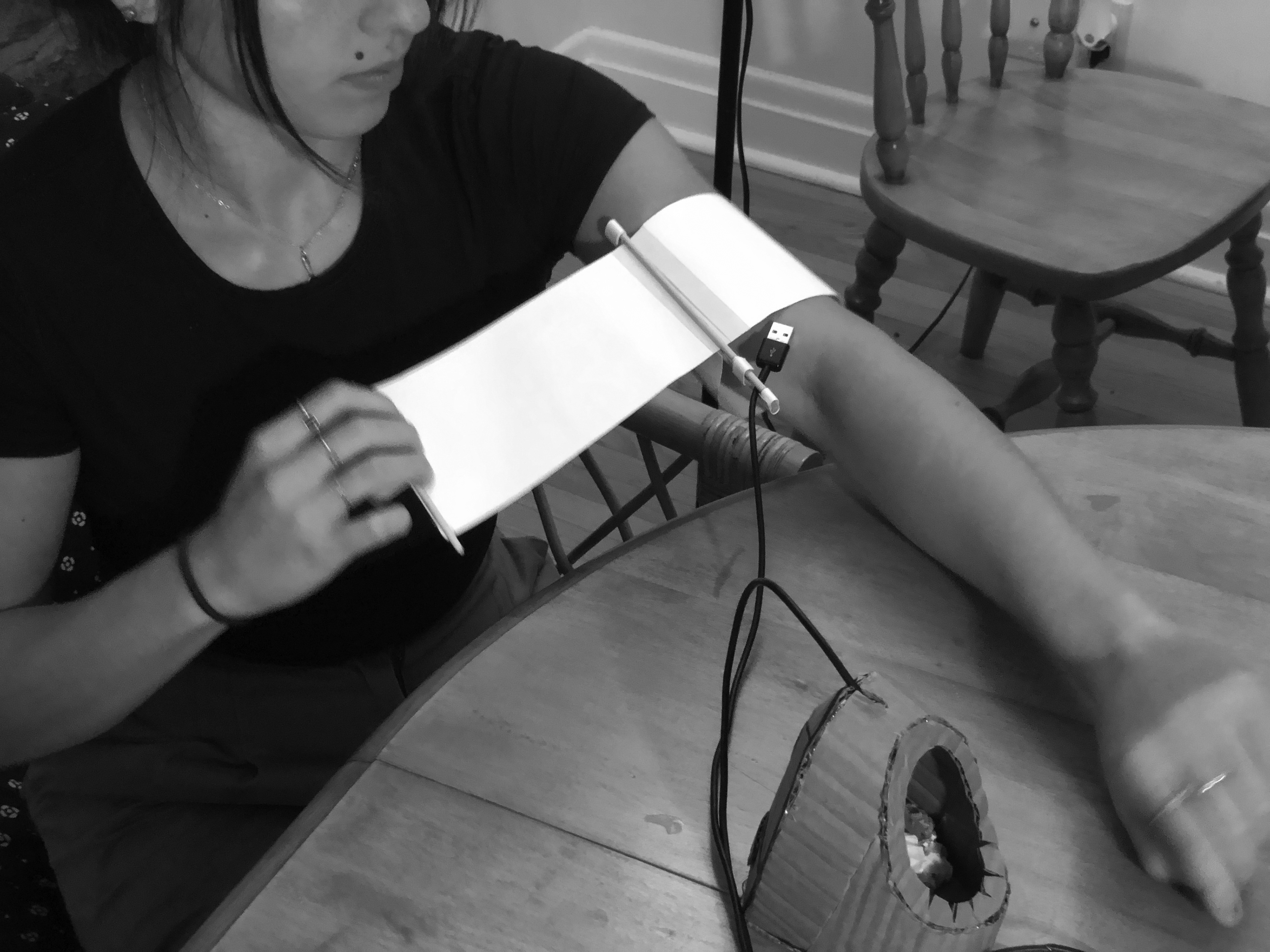
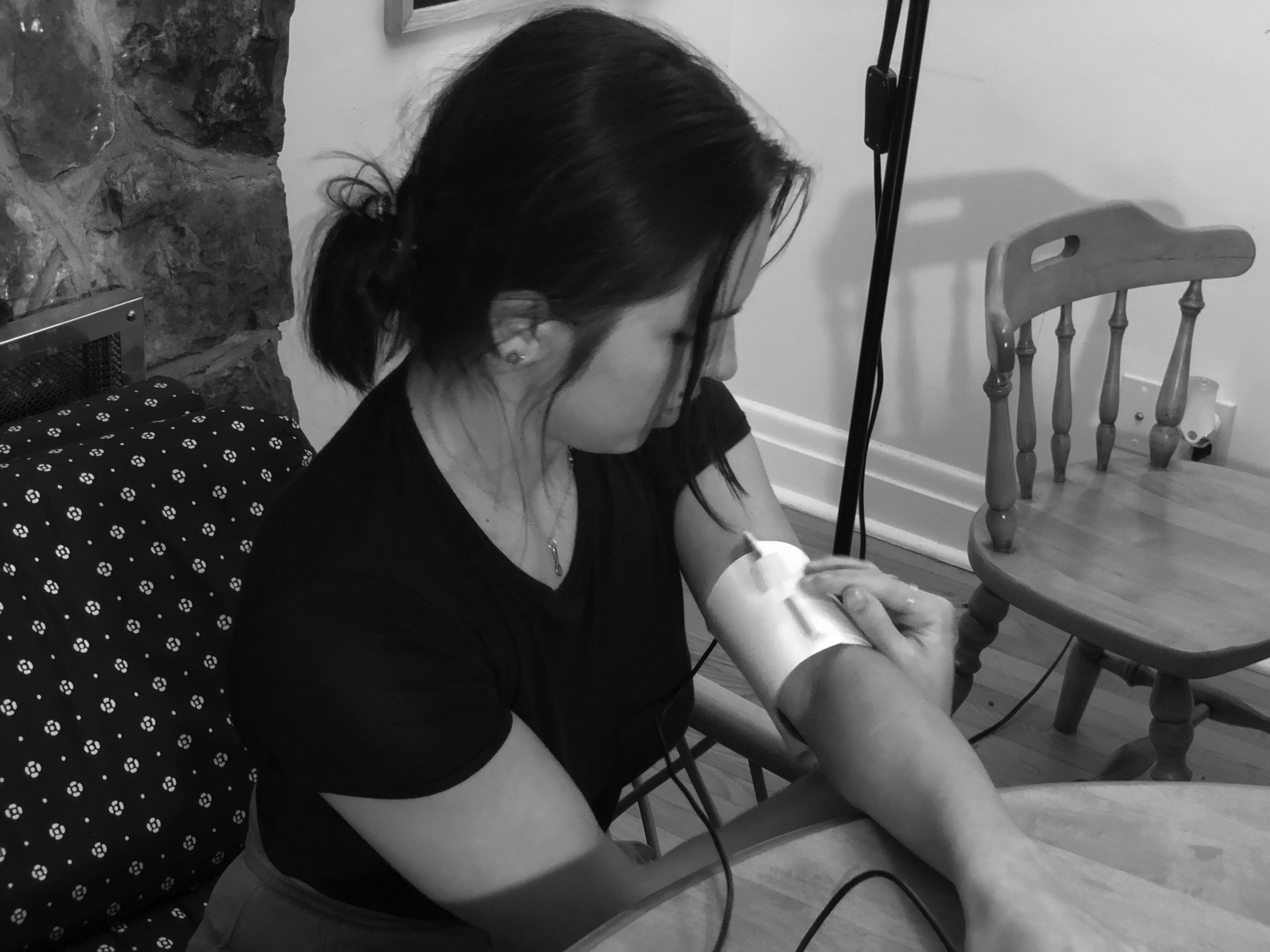
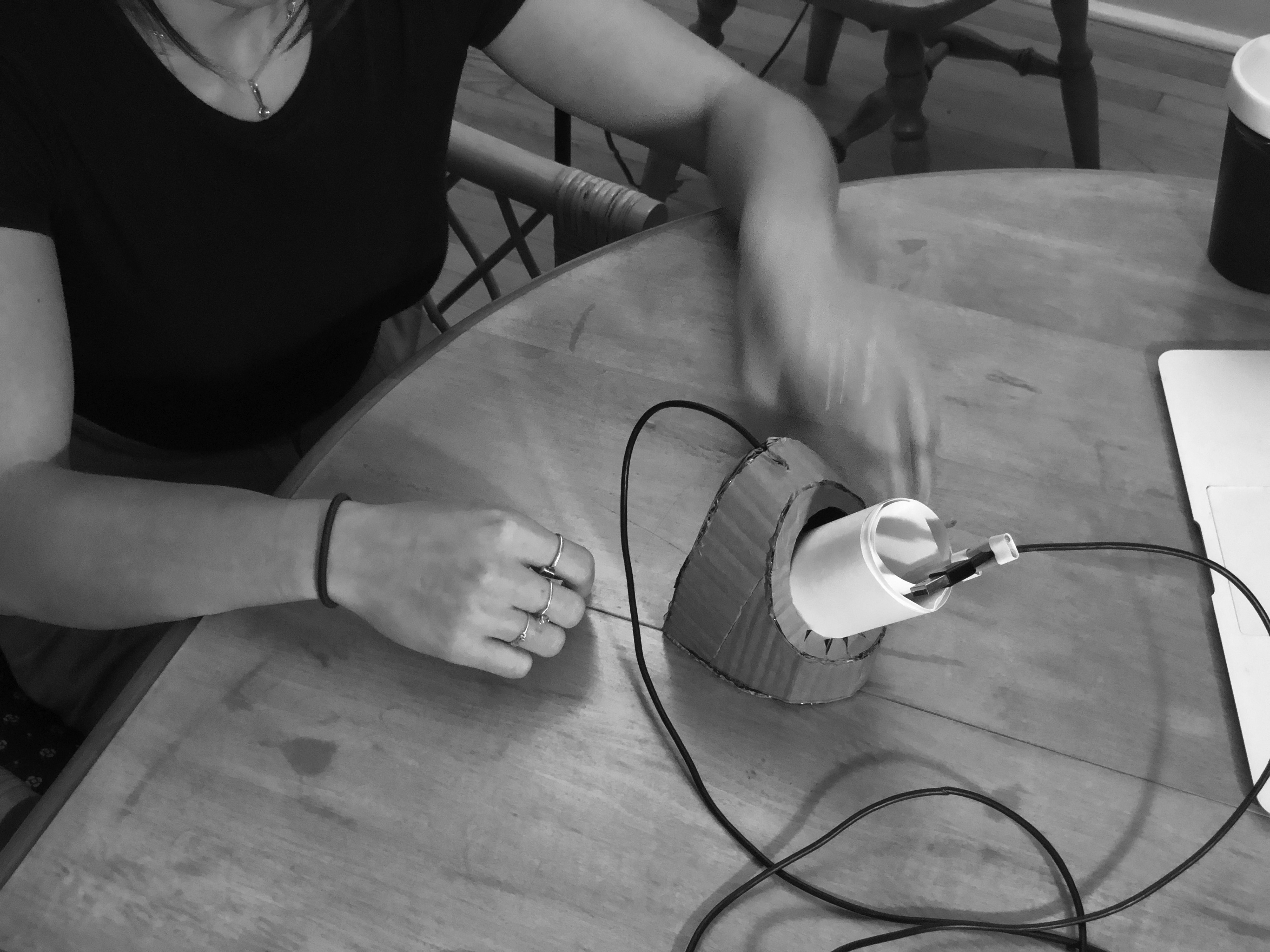
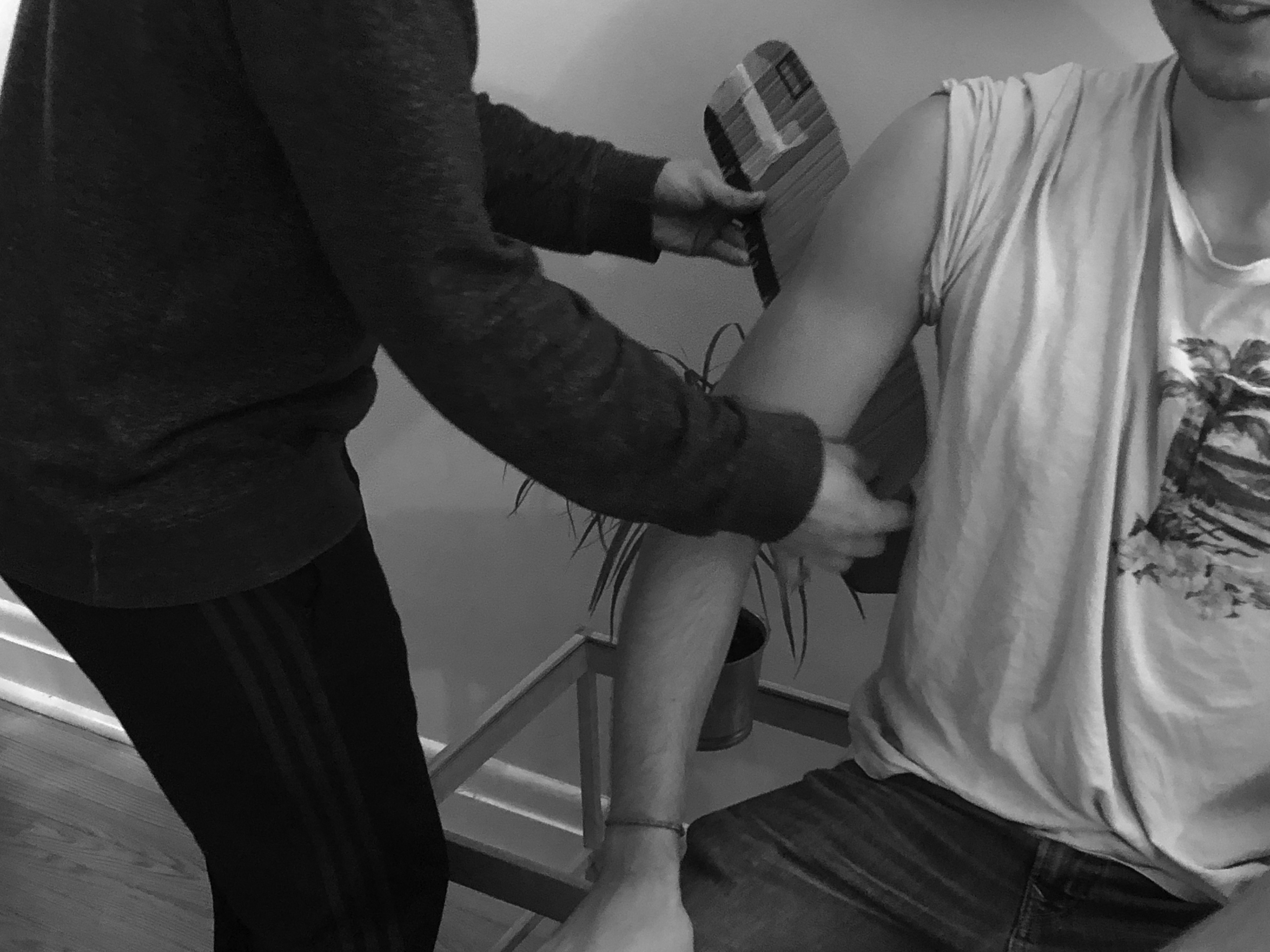
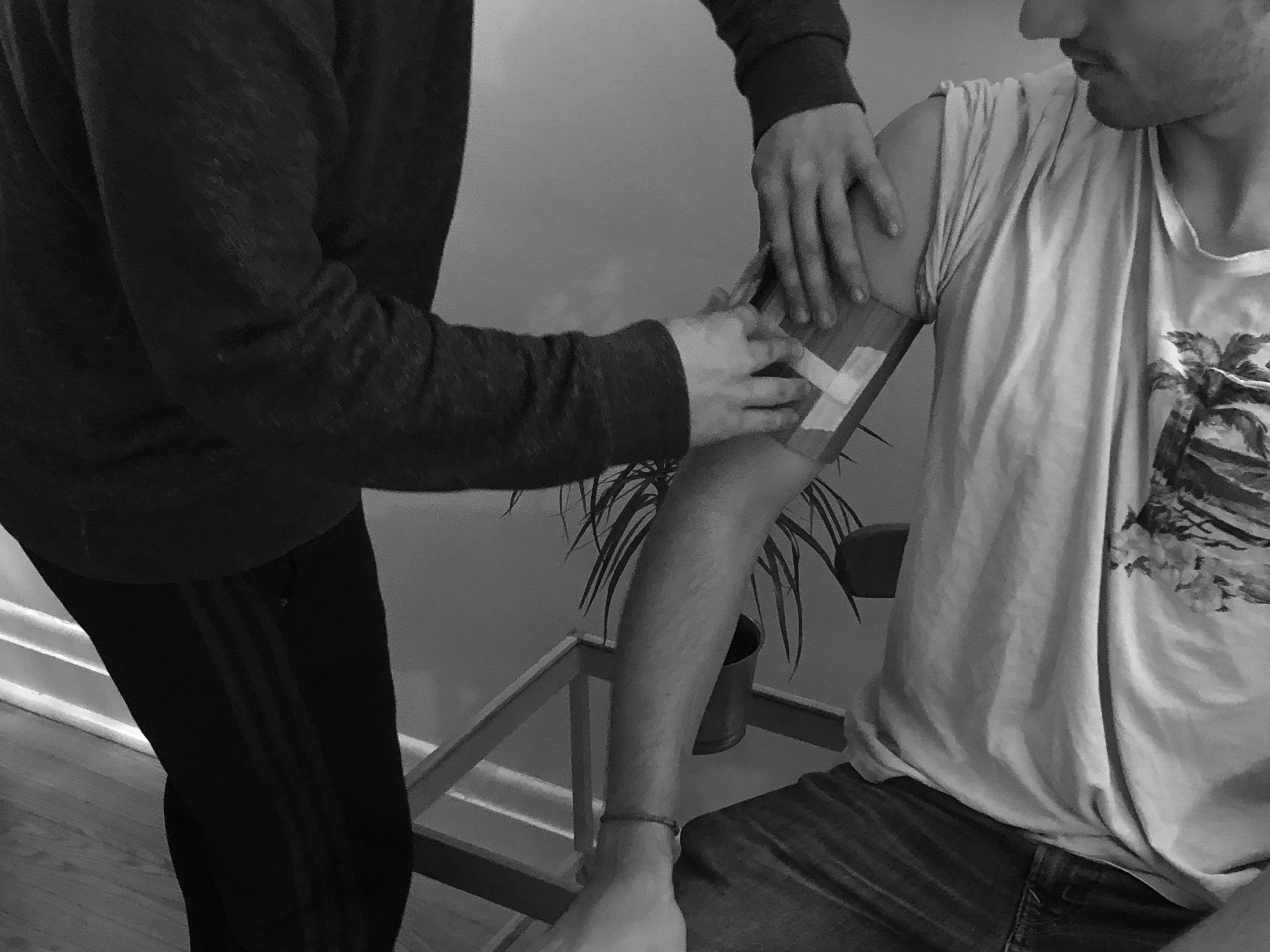
Different cuff designs were tested and optimized to allow the parent to put the cuff on easily while also deterring the child from putting it on themselves, which could be unsafe. This is the key adult involvement in the use cycle; allowing the child to be in control for the remainder.
MODEL MAKING
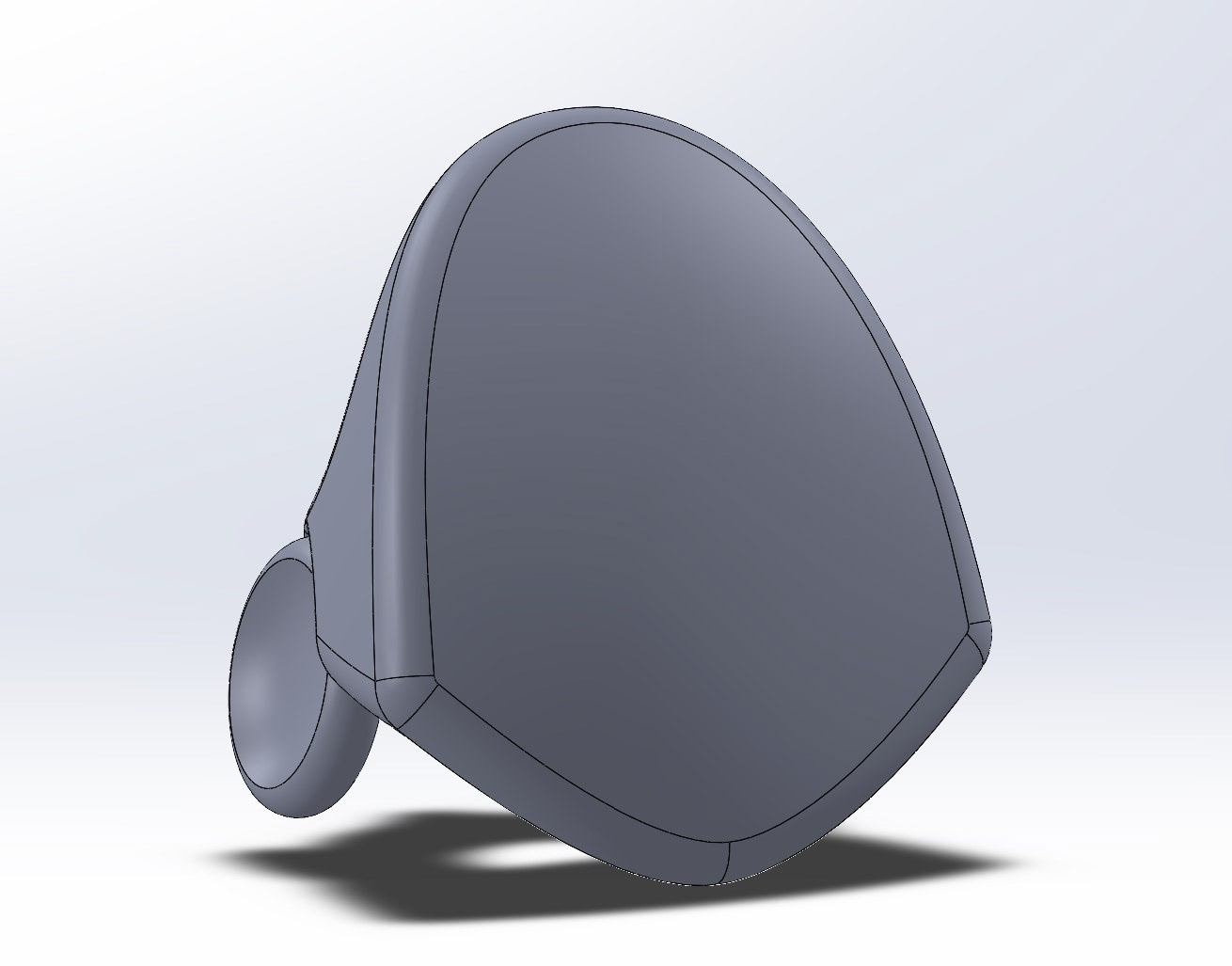
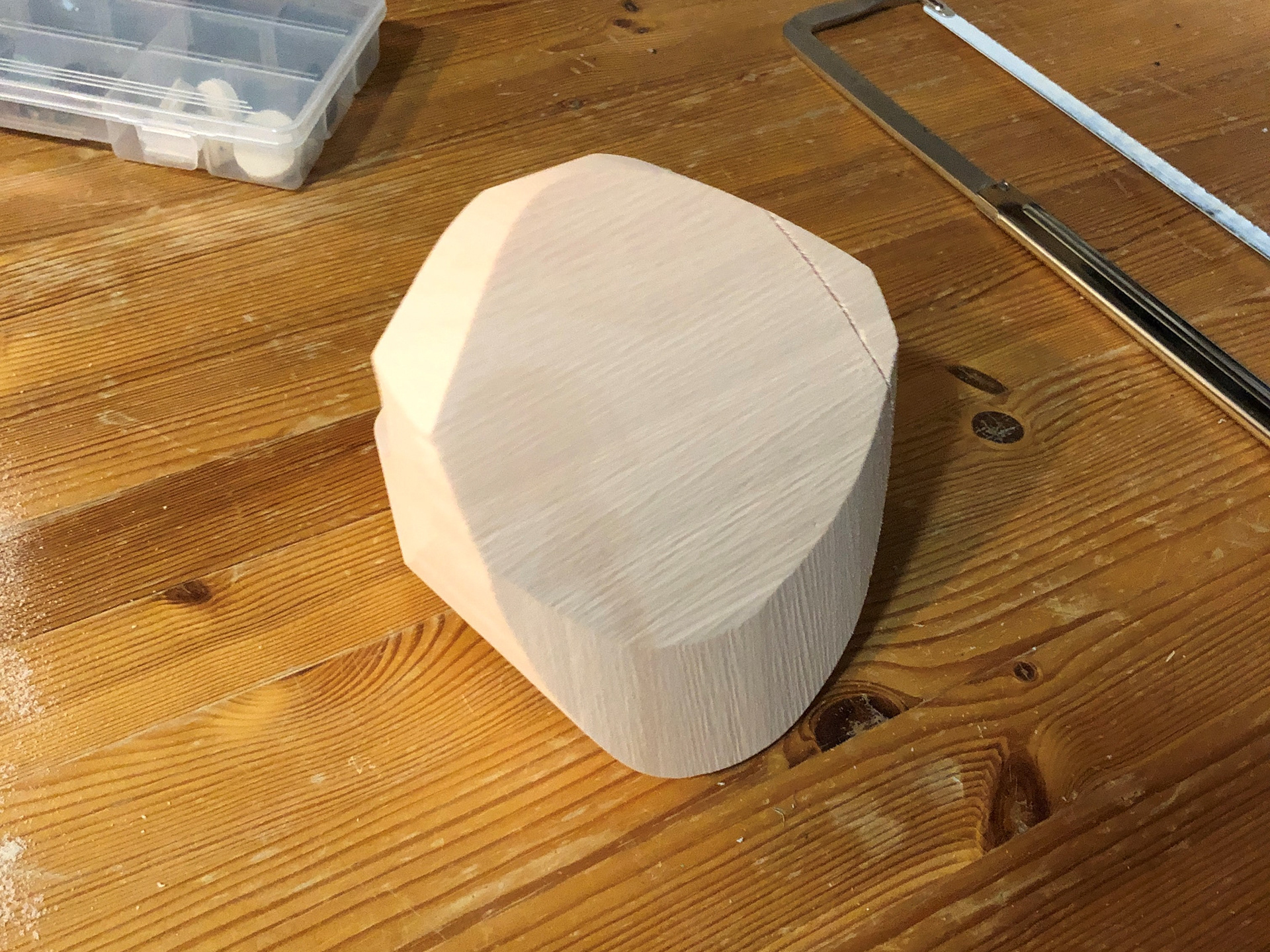
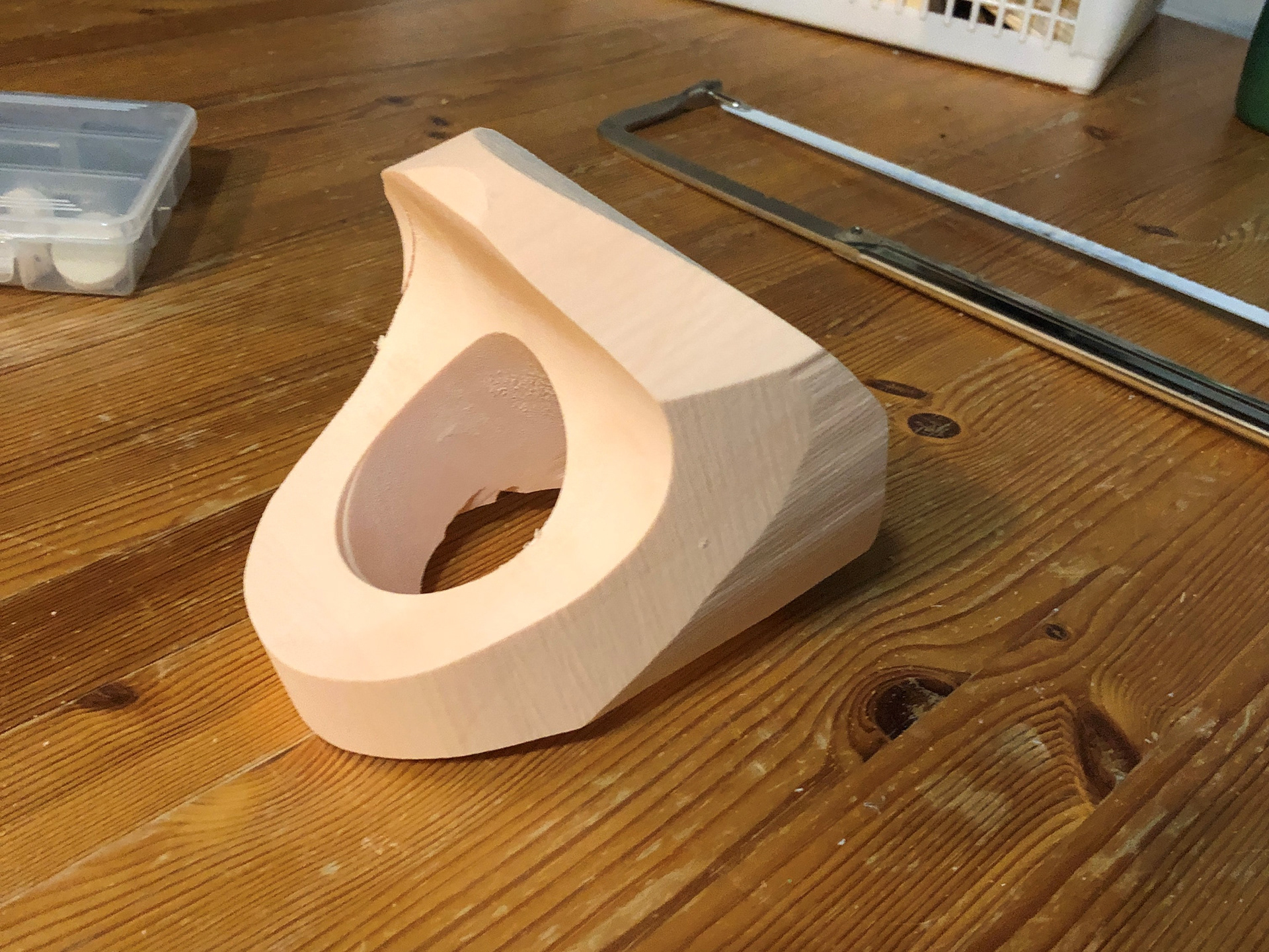
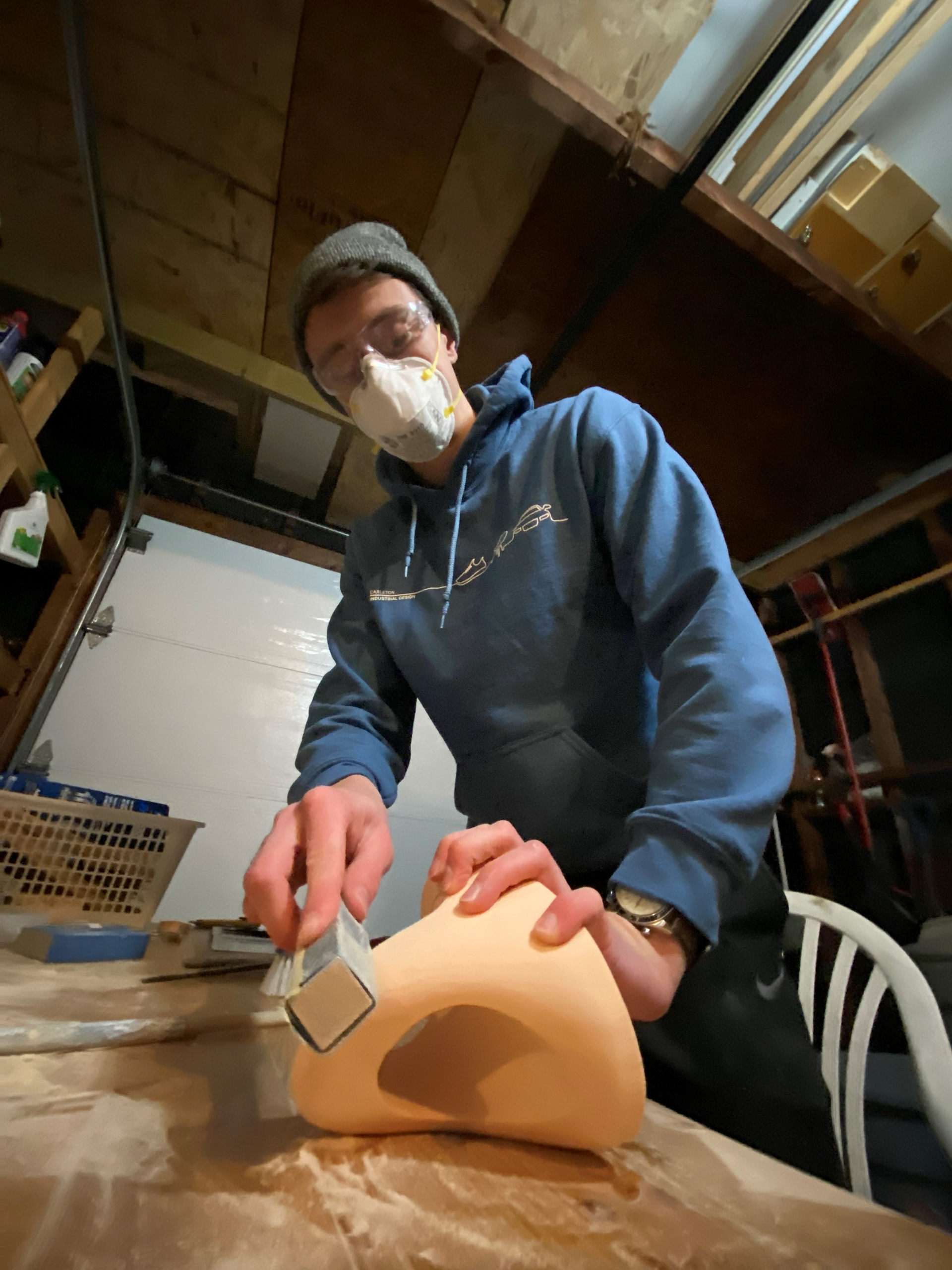
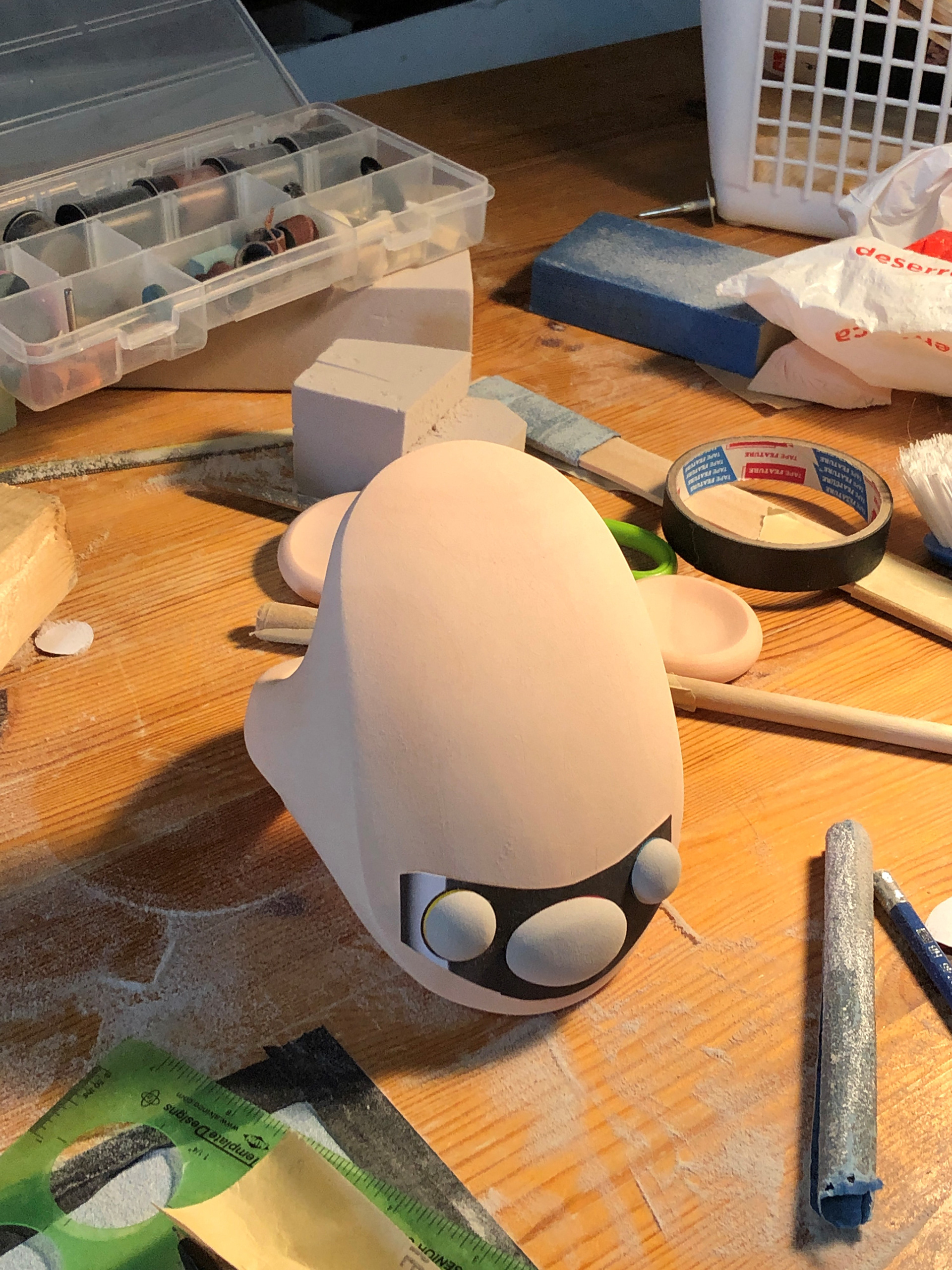

The model-making process had some unique challenges. One of these was due to a workshop error. As this project was completed without direct access to workshop facilities, the model had to be made at home. Some rough cuts were made on the urethane foam block by the workshop remotely, but as can be seen in the first and second images, the front face was cut upside down. This presented itself as a chance to revisit the form design, and the material removal and edge rounding that occurred as a result provided a much better aesthetic overall. The CAD file was then reworked to reflect the changes, and the final design was improved in the end by the error.
FINAL DESIGN
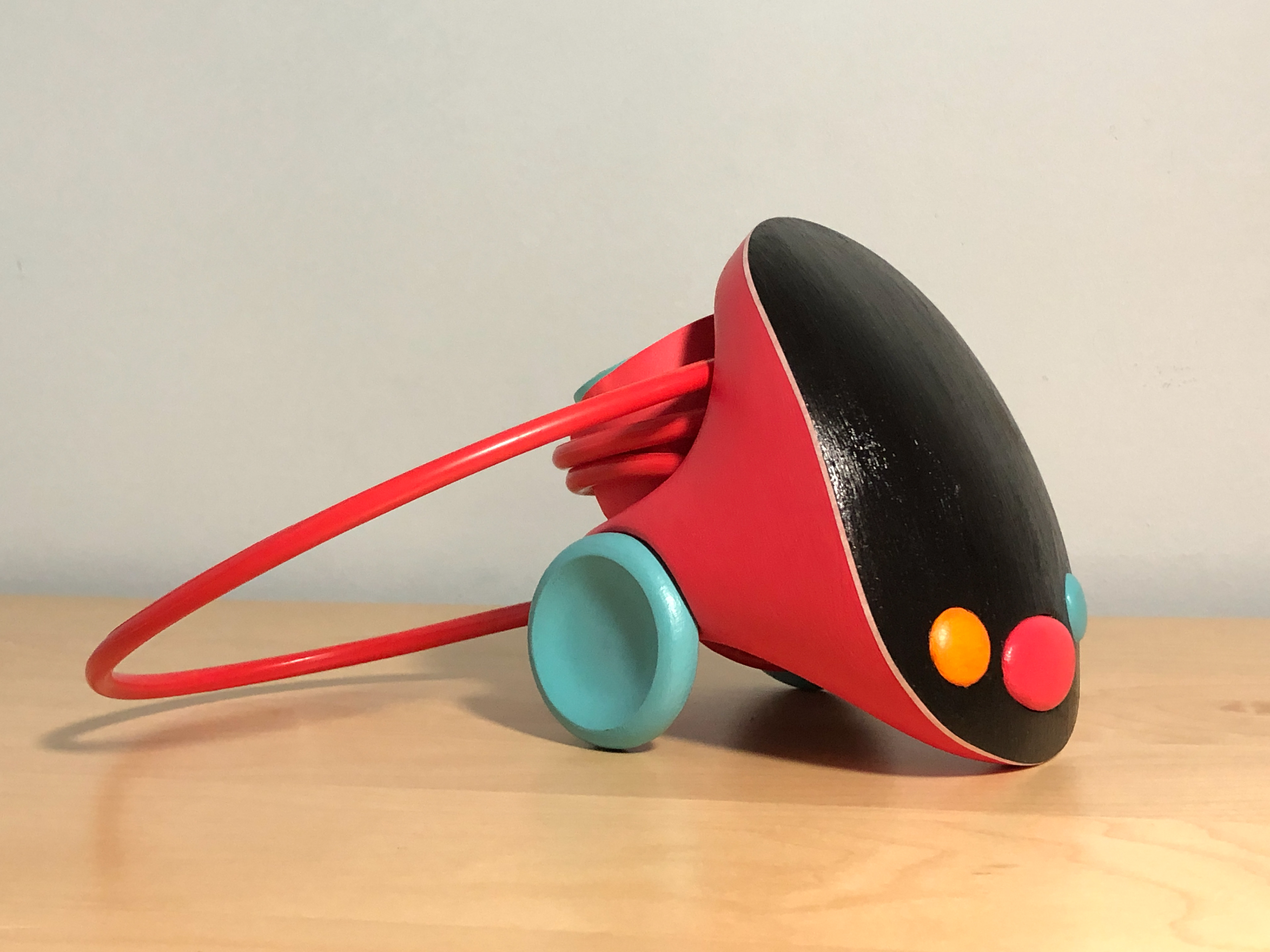
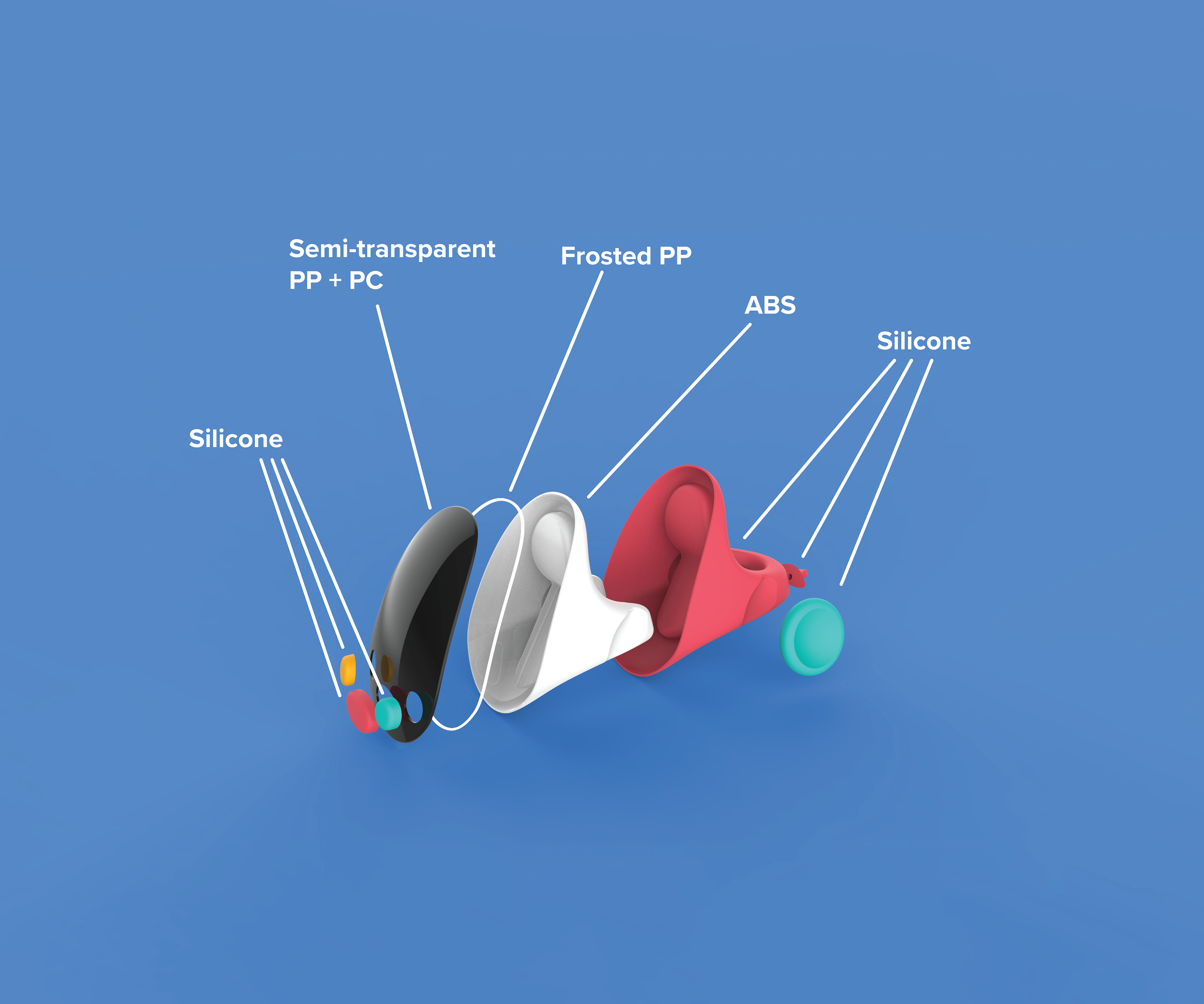
The final design is a playful, friendly device that a child who needs to monitor blood pressure would be much less intimidated by than devices currently on the market. Naturally, blood pressure monitoring is still an unpleasant experience, but with clear and simple communication and maximum child involvement, the experience is greatly improved.

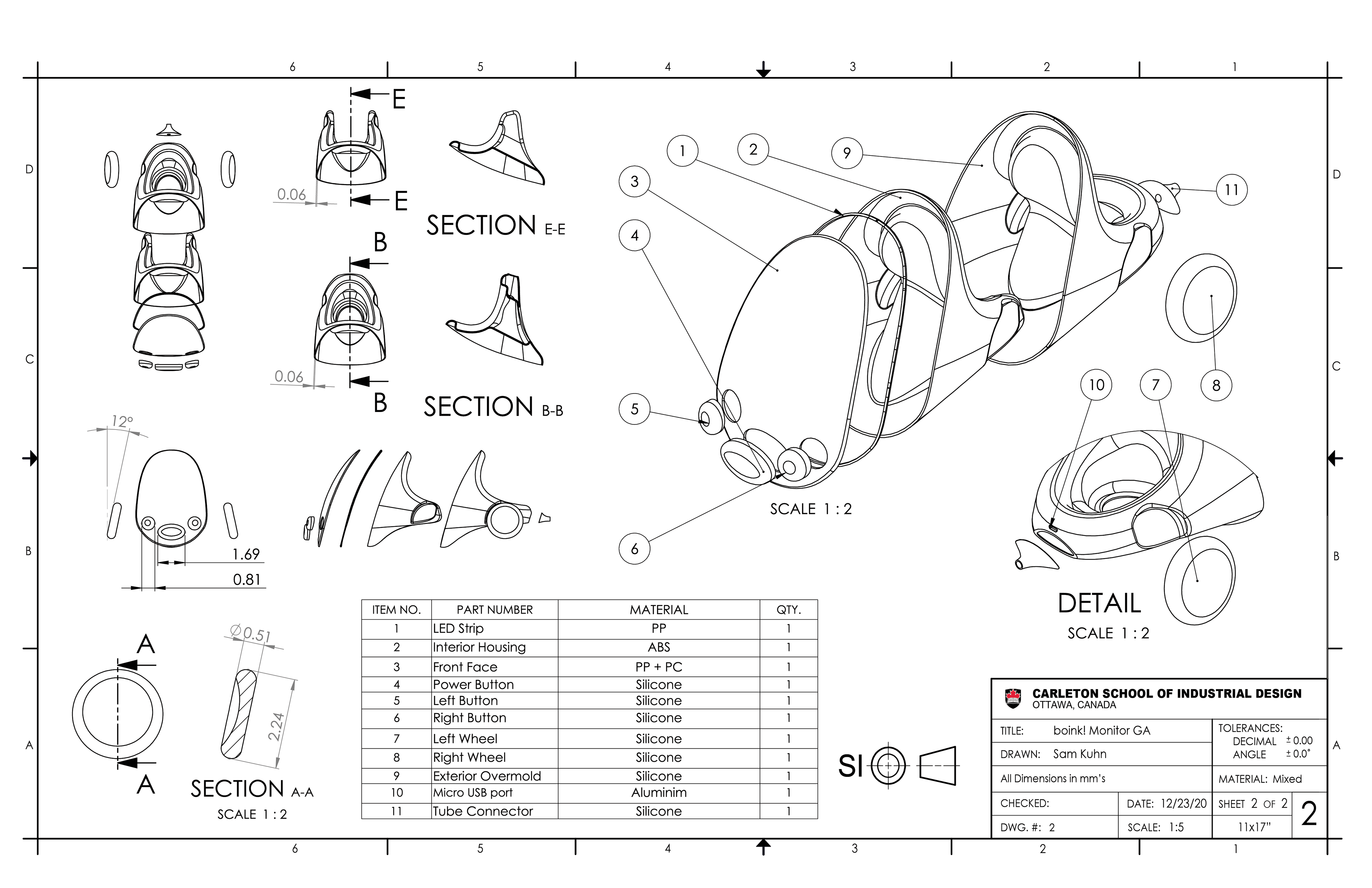
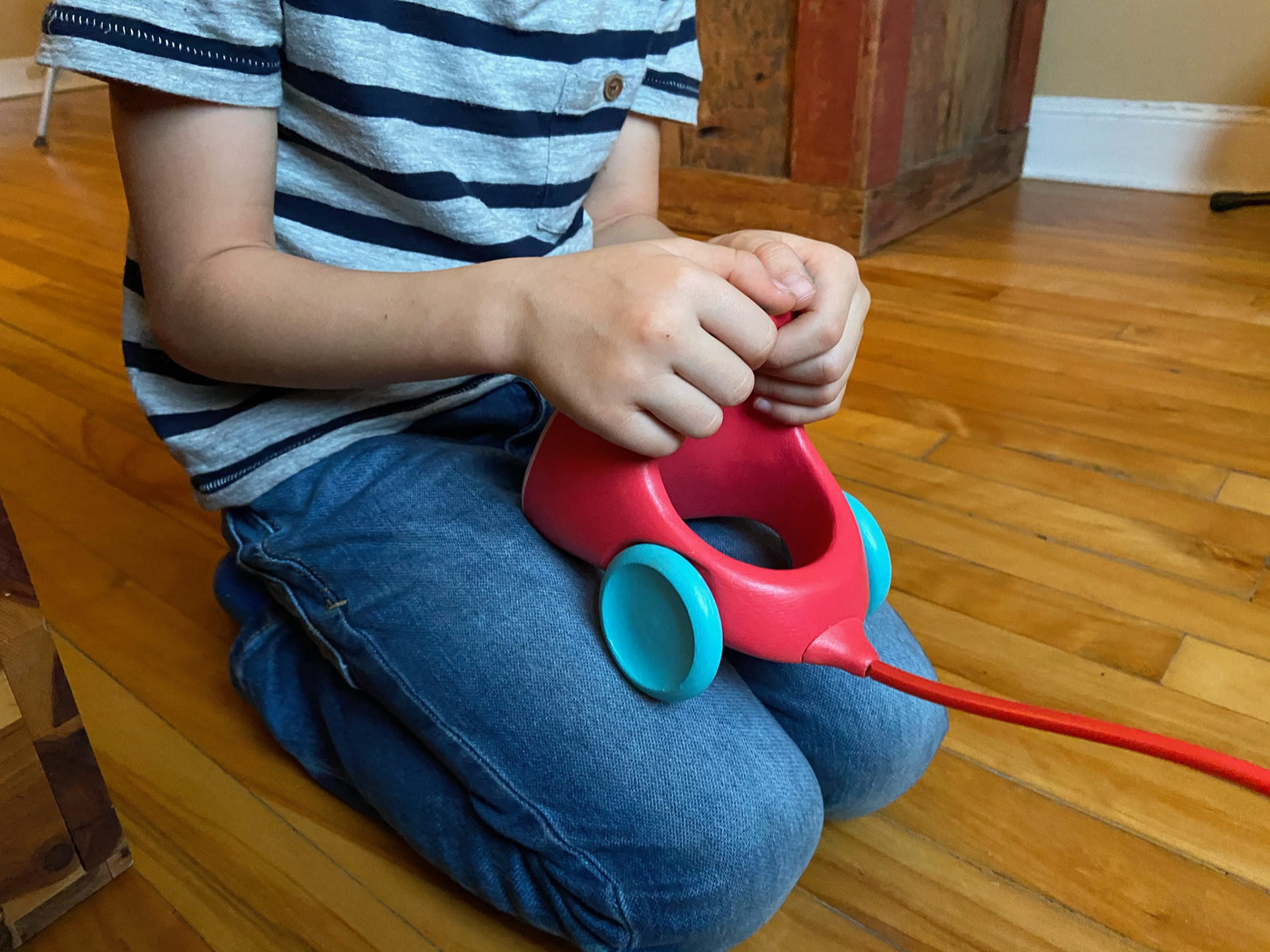
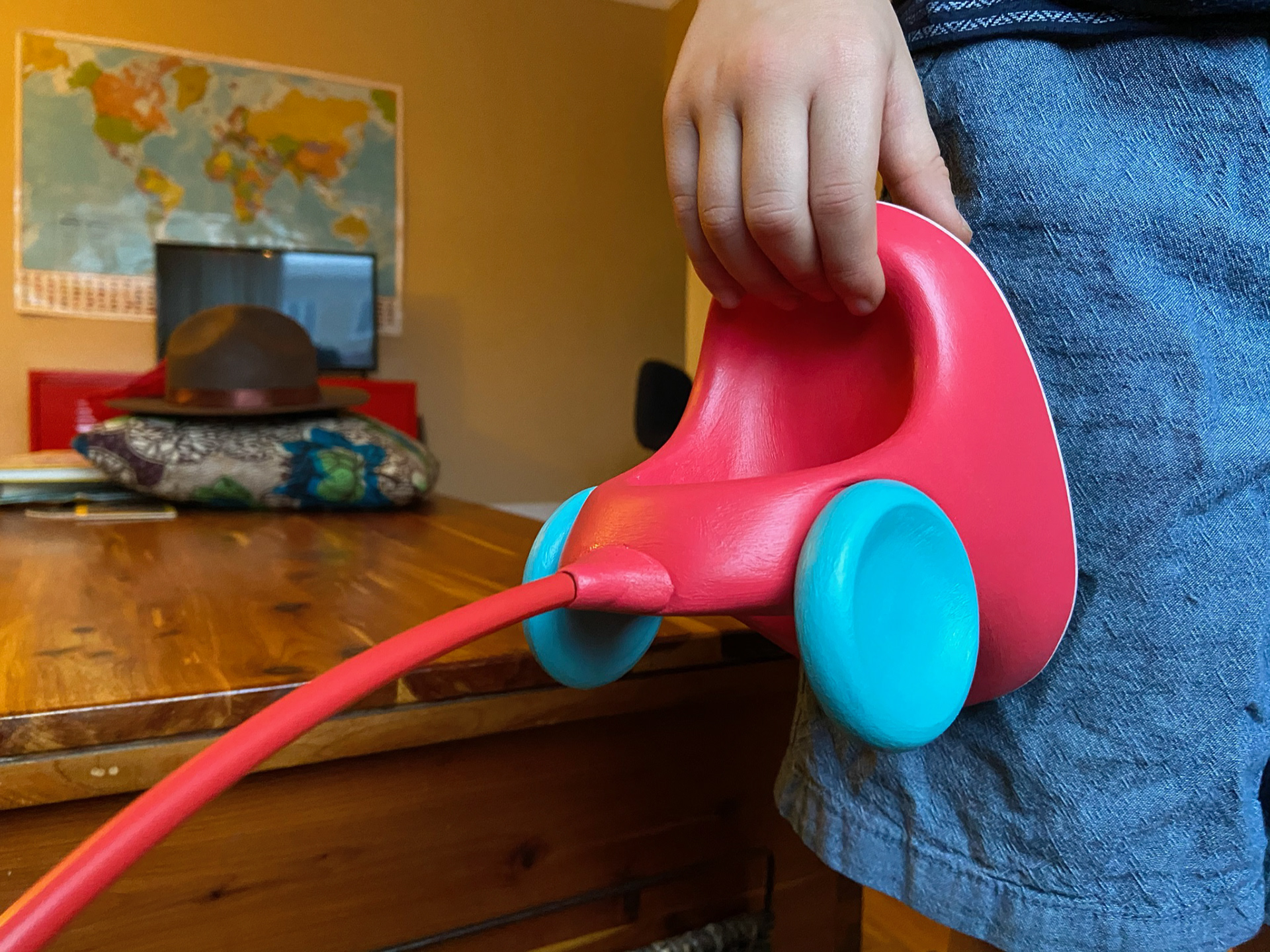
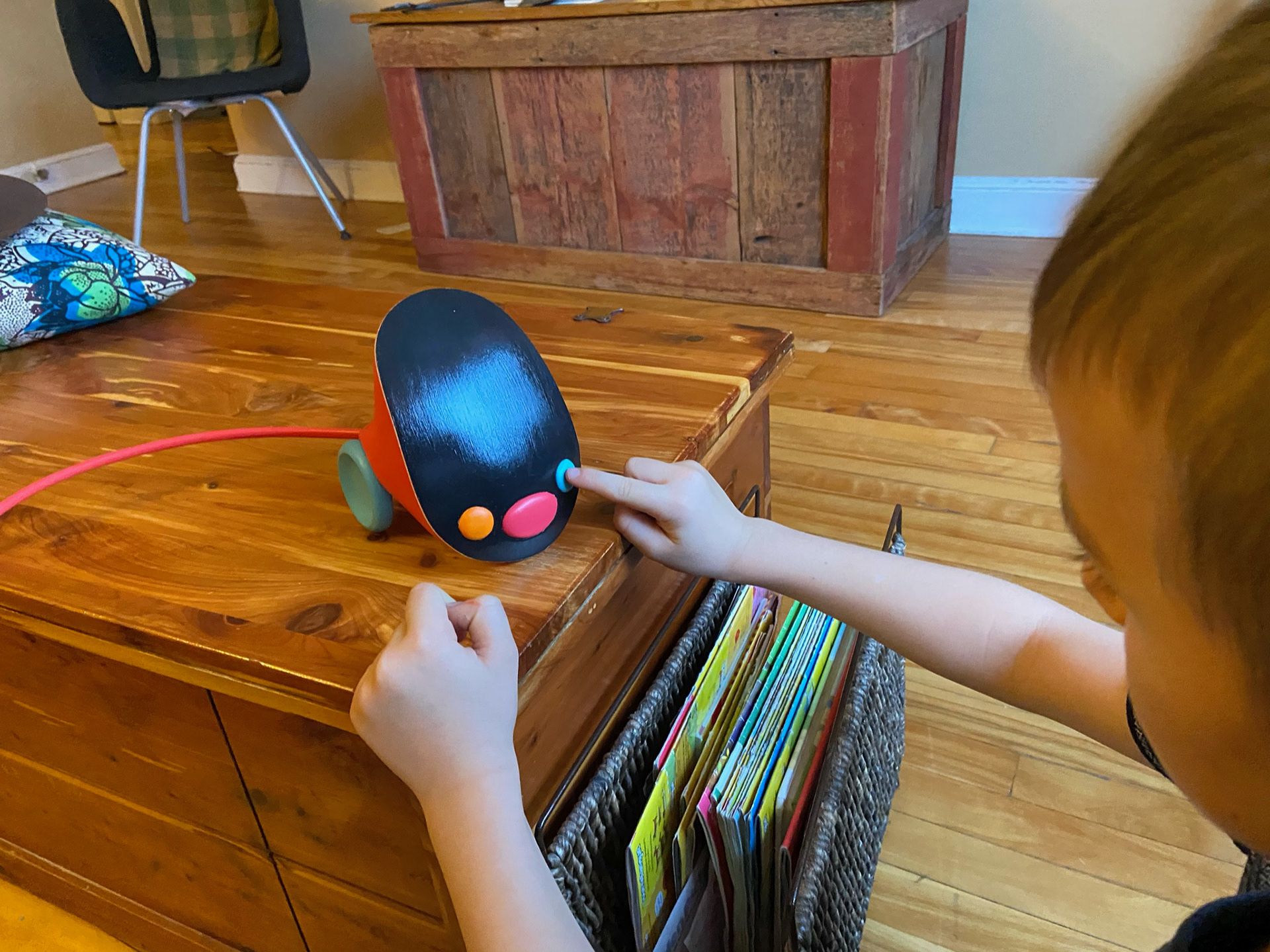
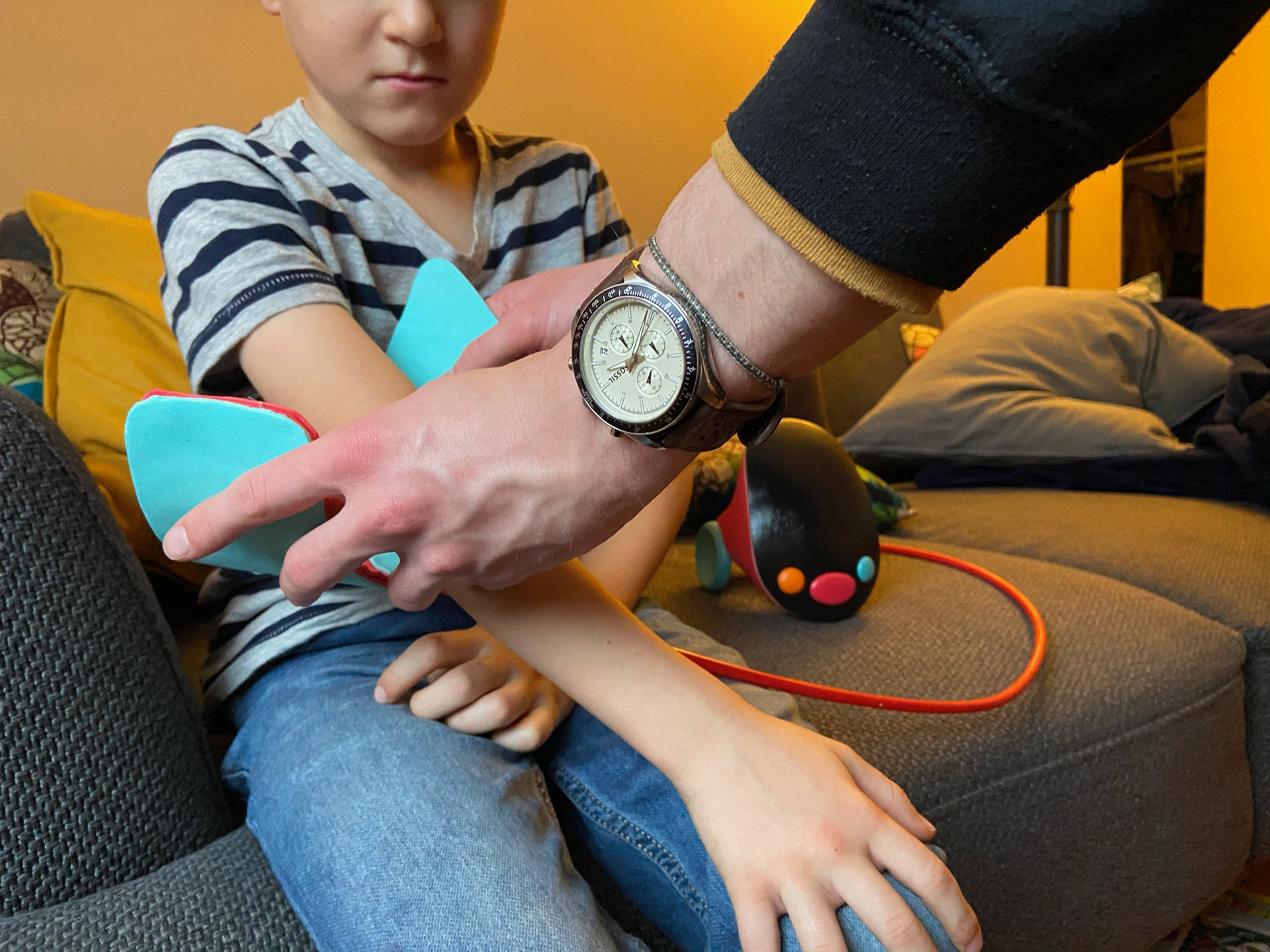
As mentioned before, the child is the center of the user narrative. An adult is present to ensure safe set-up and supervision, but each other step is focused on the real user: the child. Each step of the cycle, fetching the device, pressing the start button, wrapping and storing the cuff, becomes a ritual that strengthens the relationship between the child and the monitor. This involvement drastically improves the child's comfort with the monitoring process, and results in more accurate readings, and a better user experience.